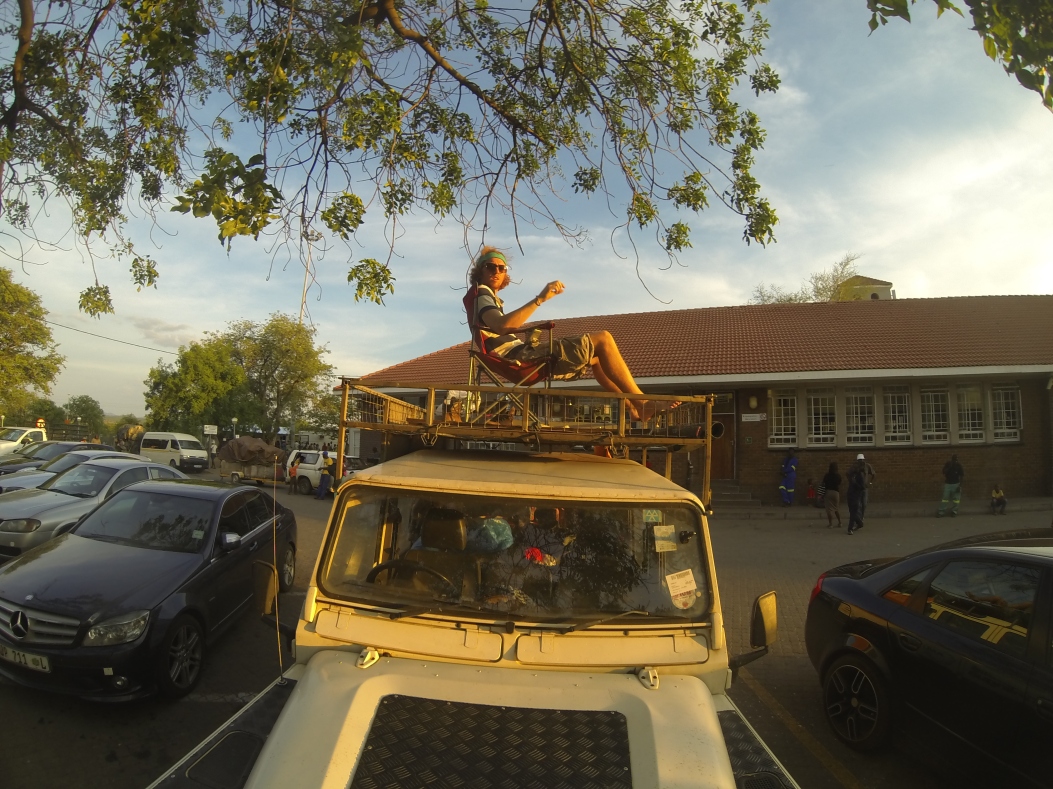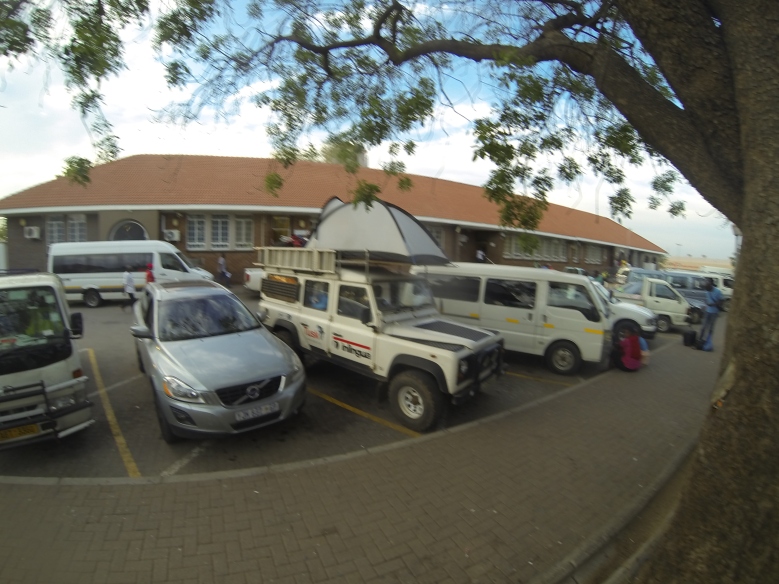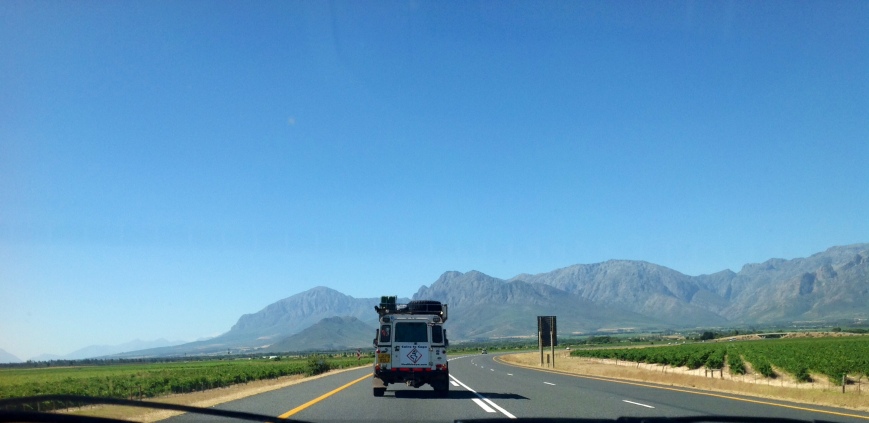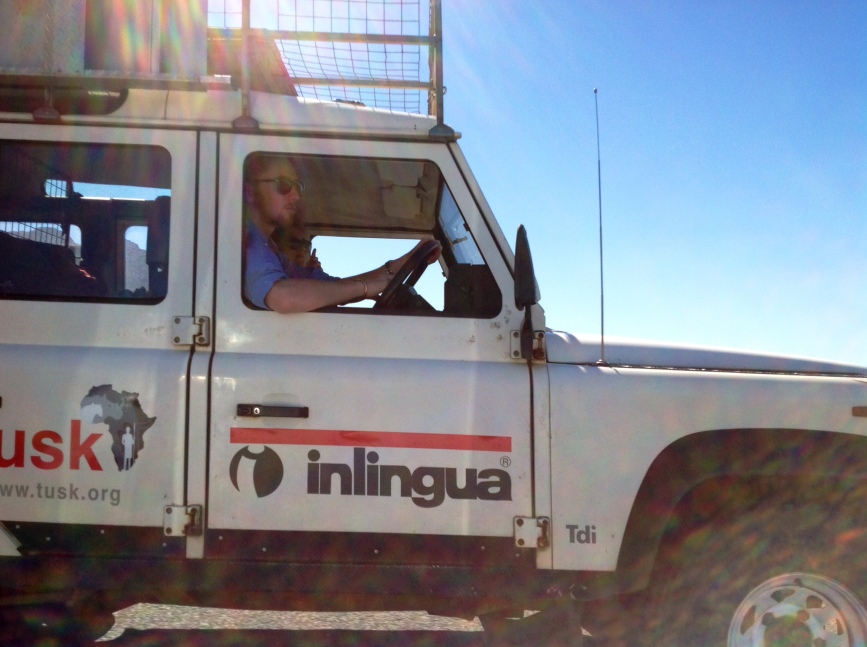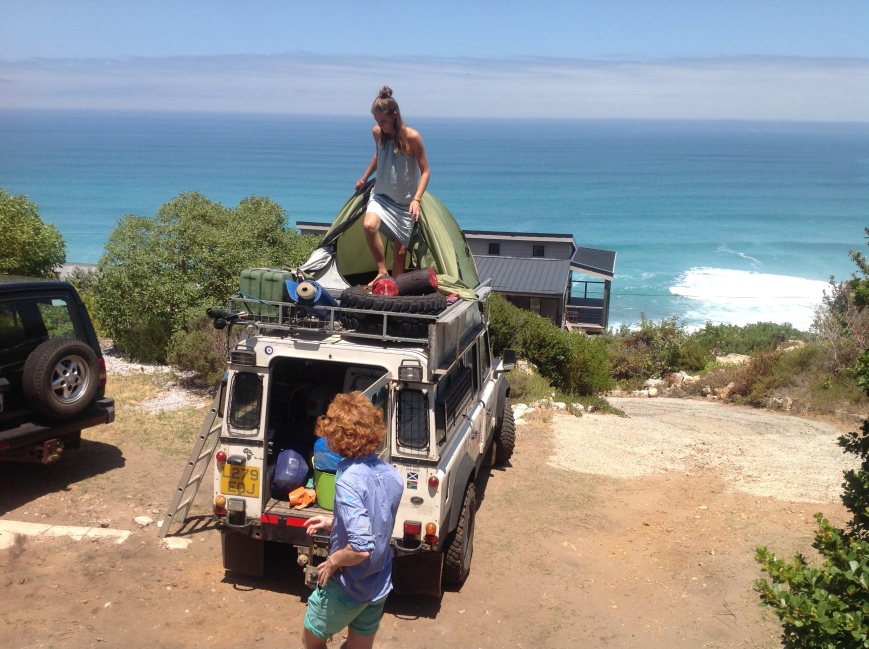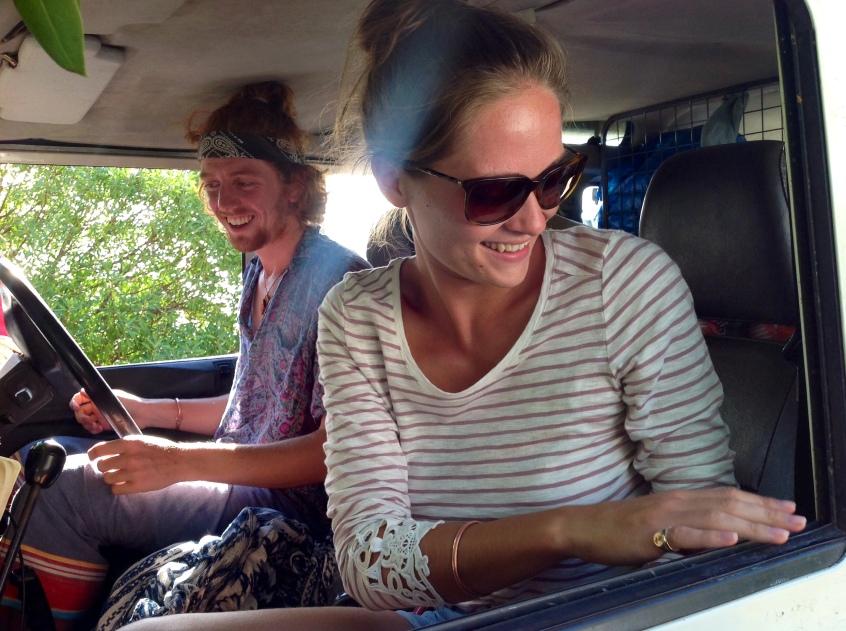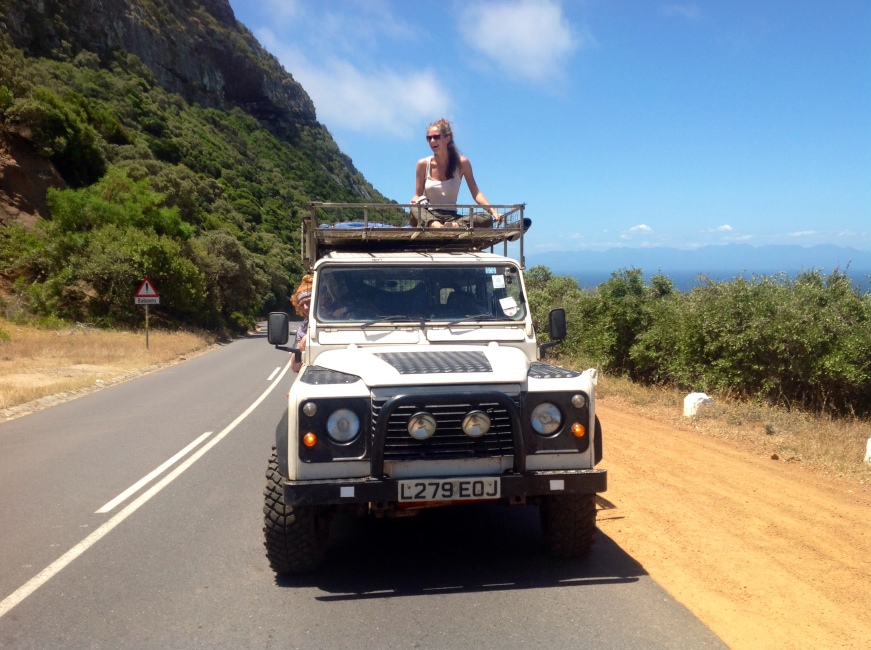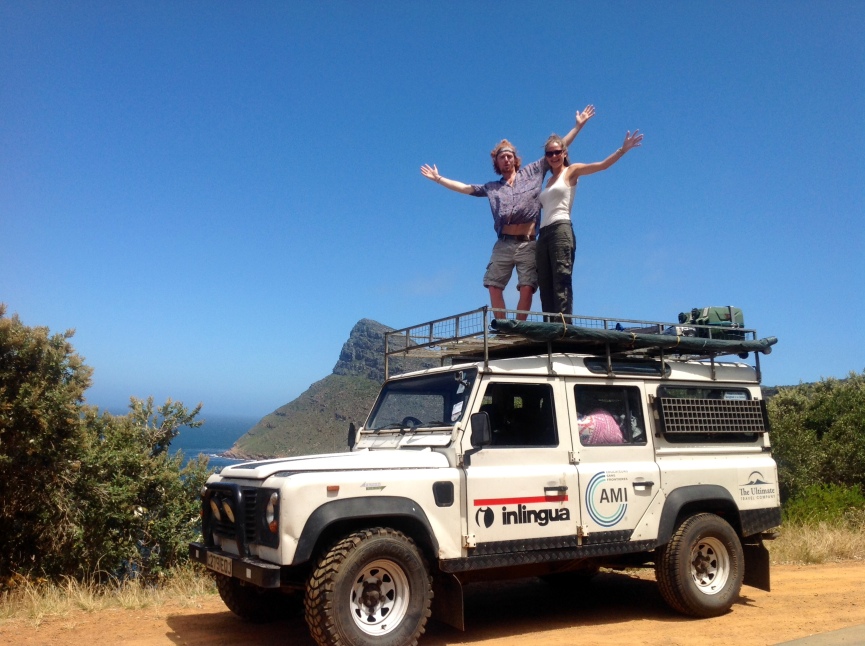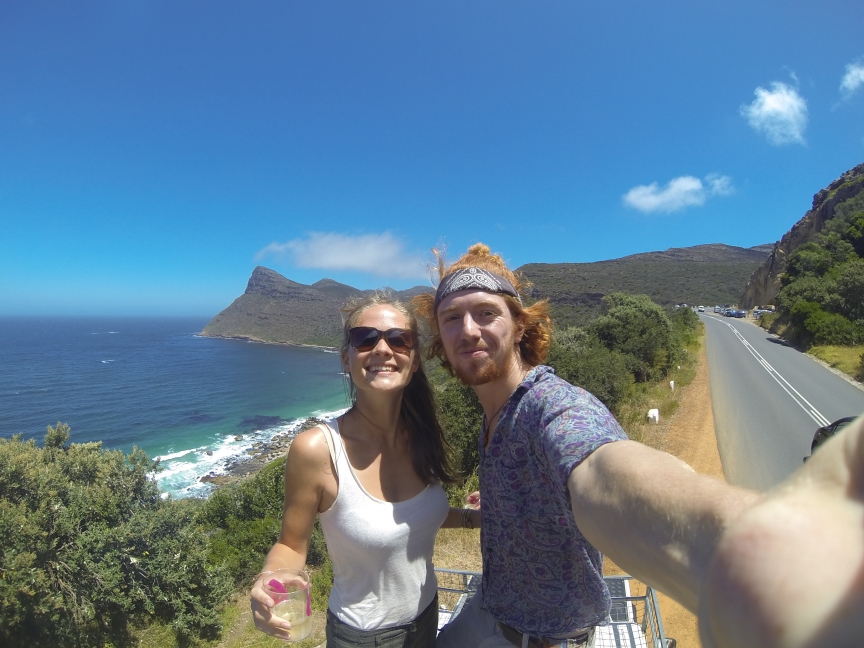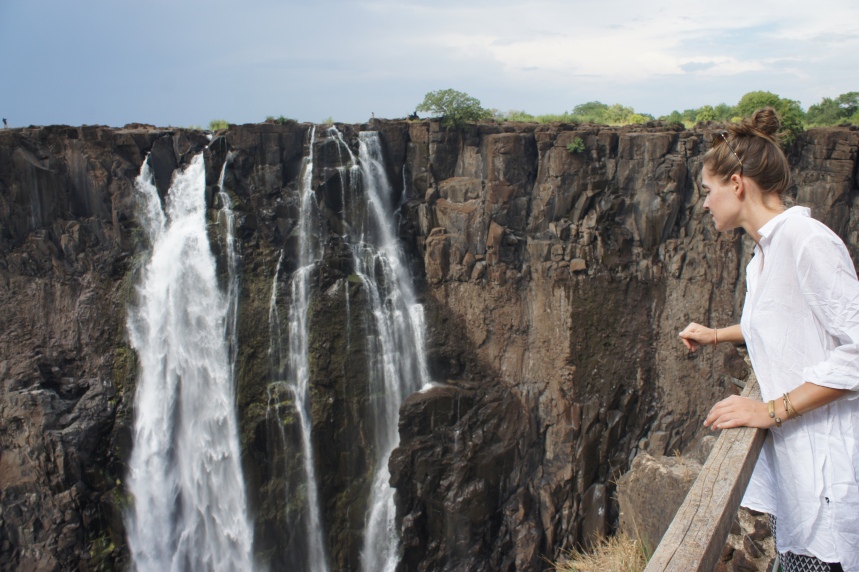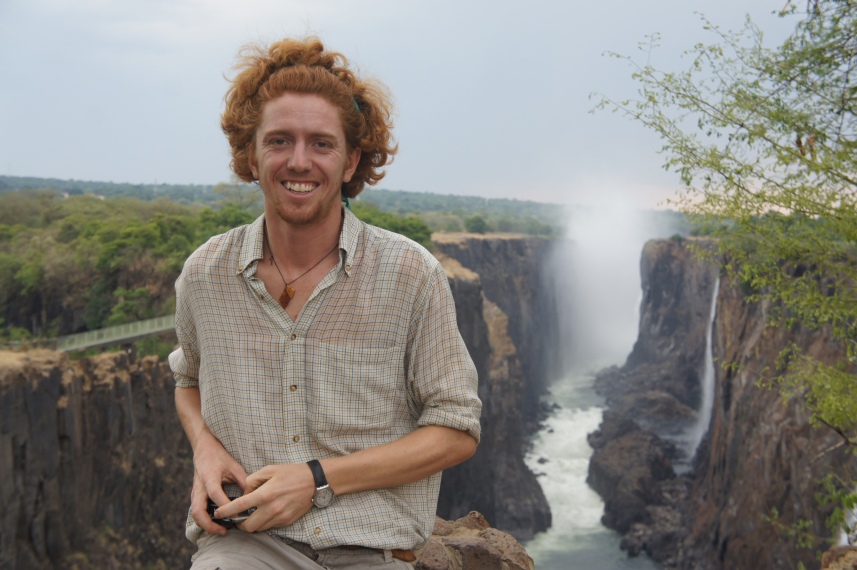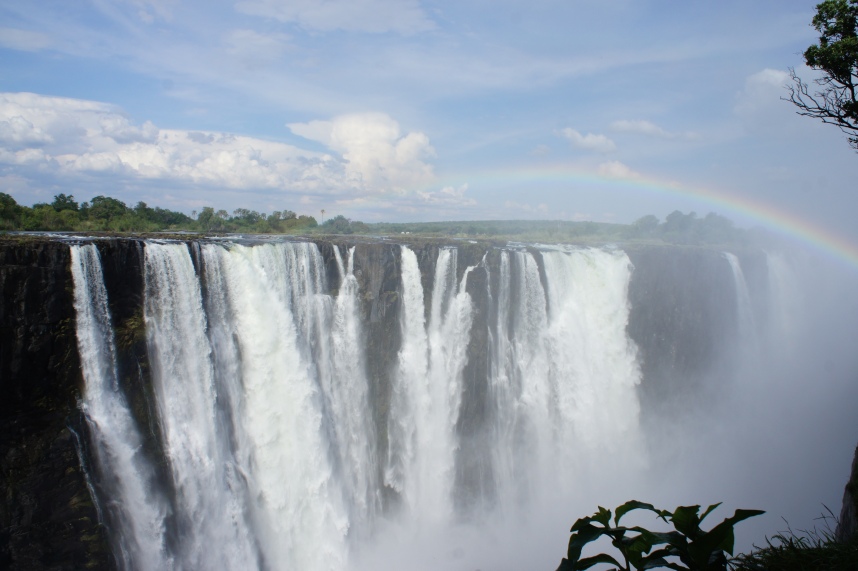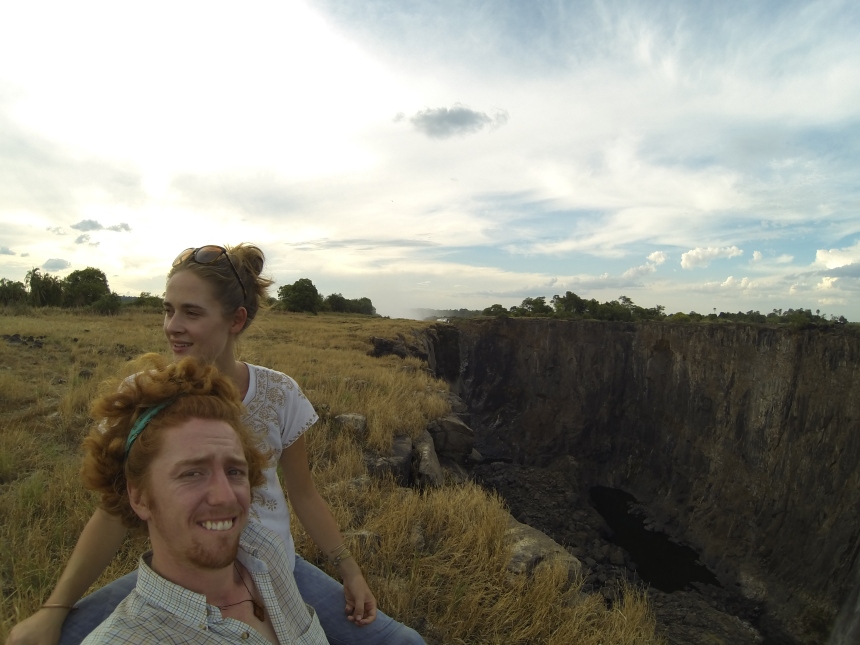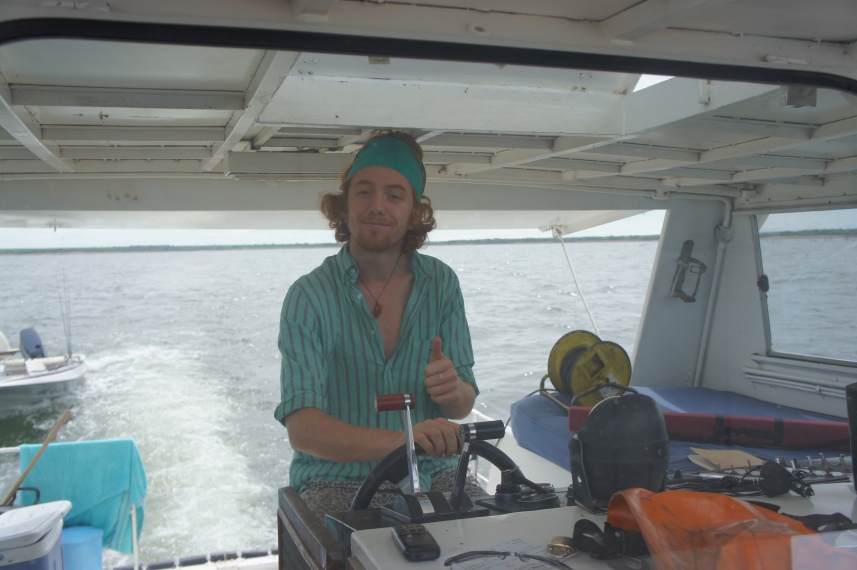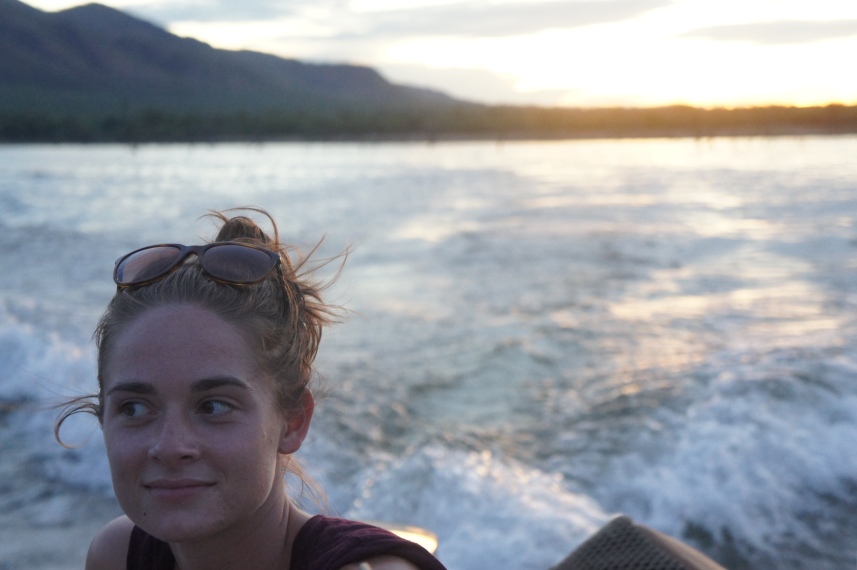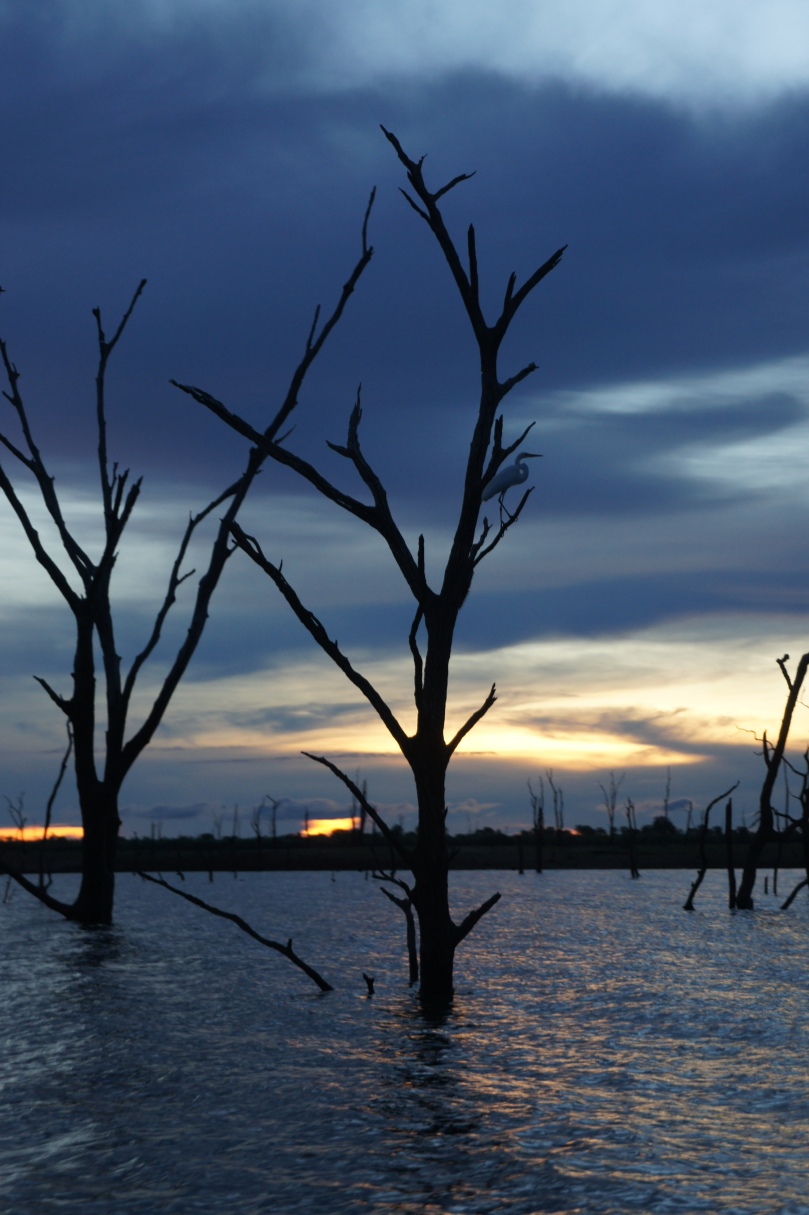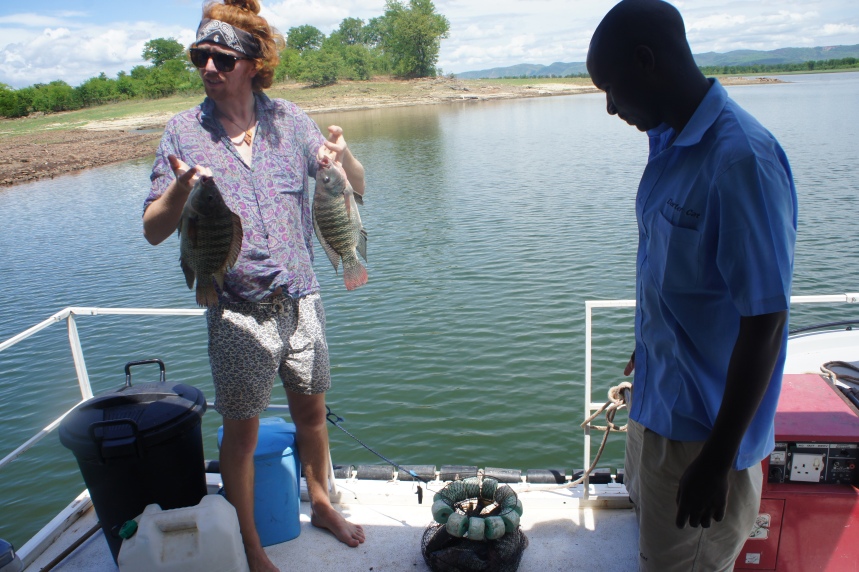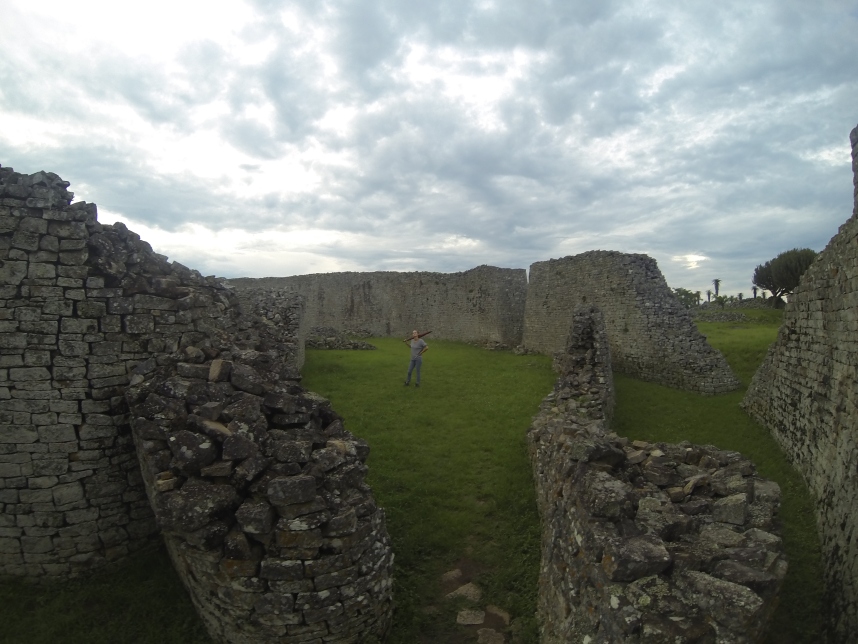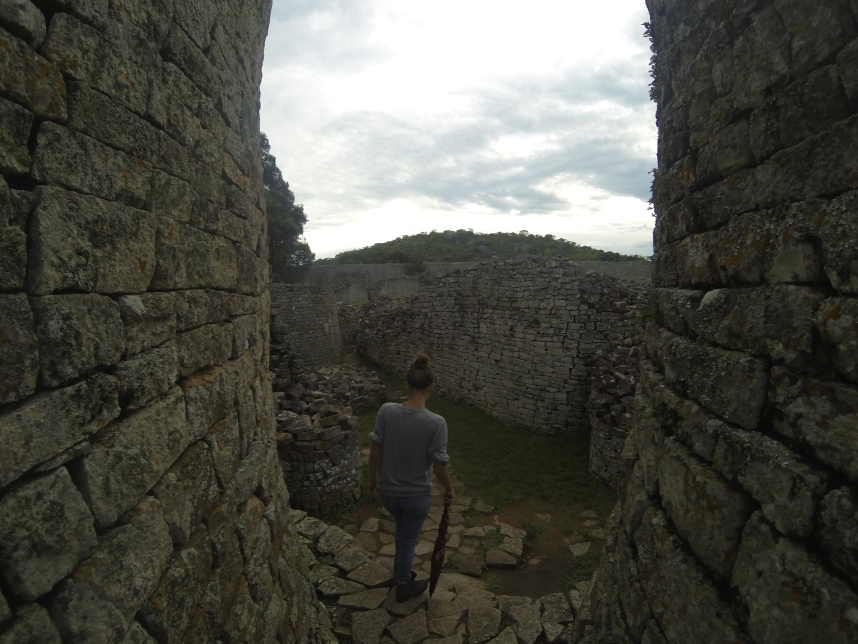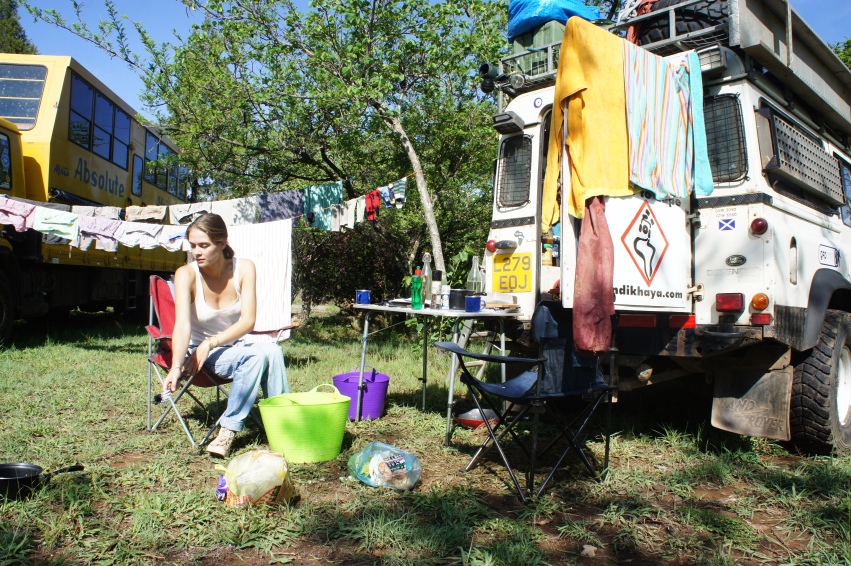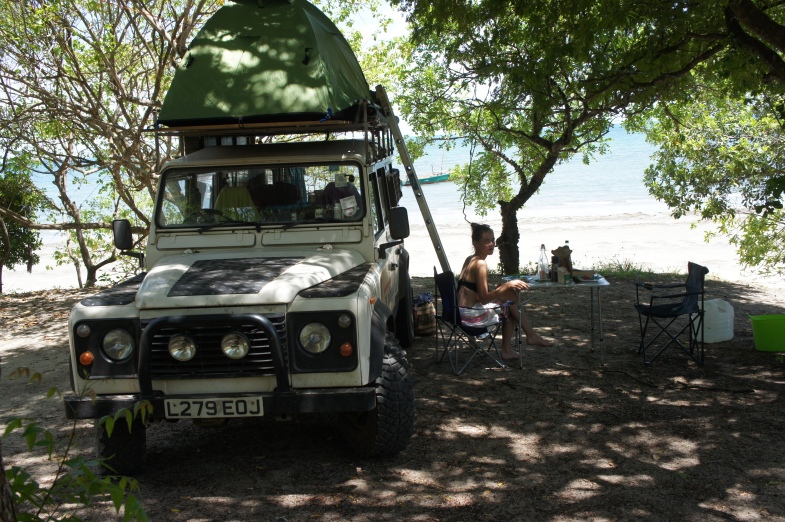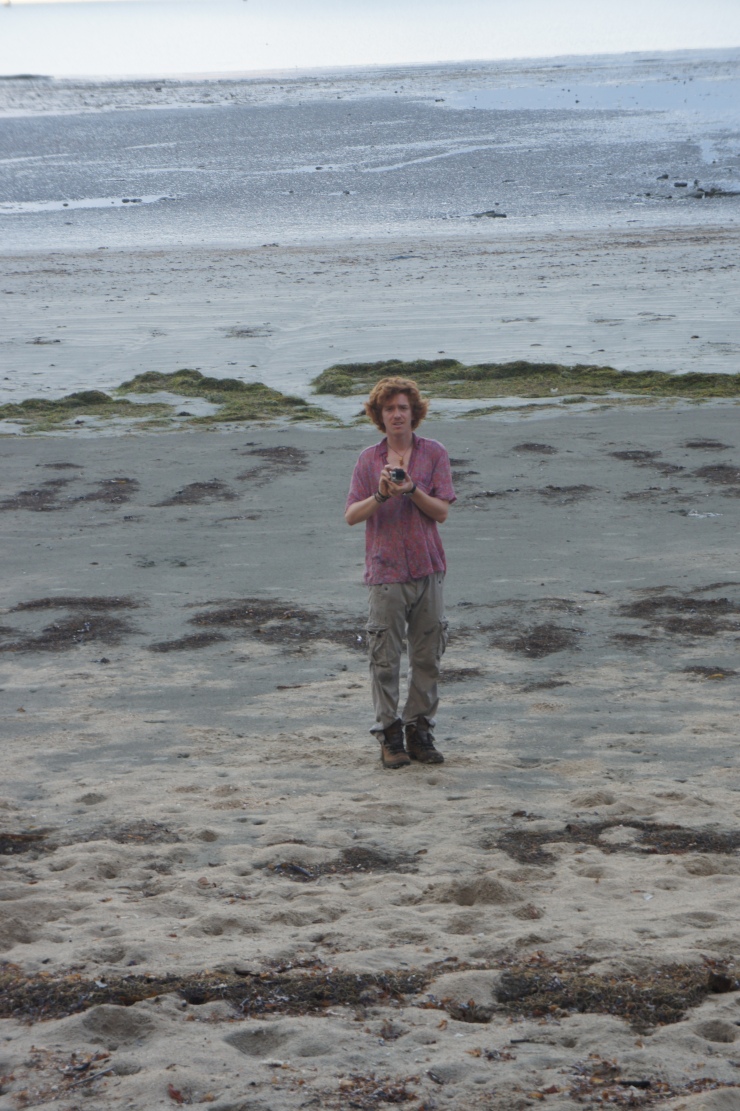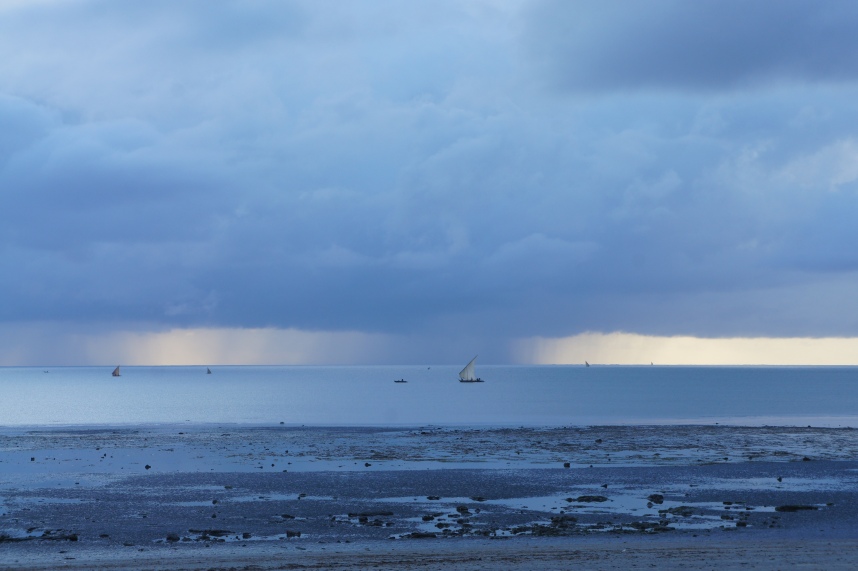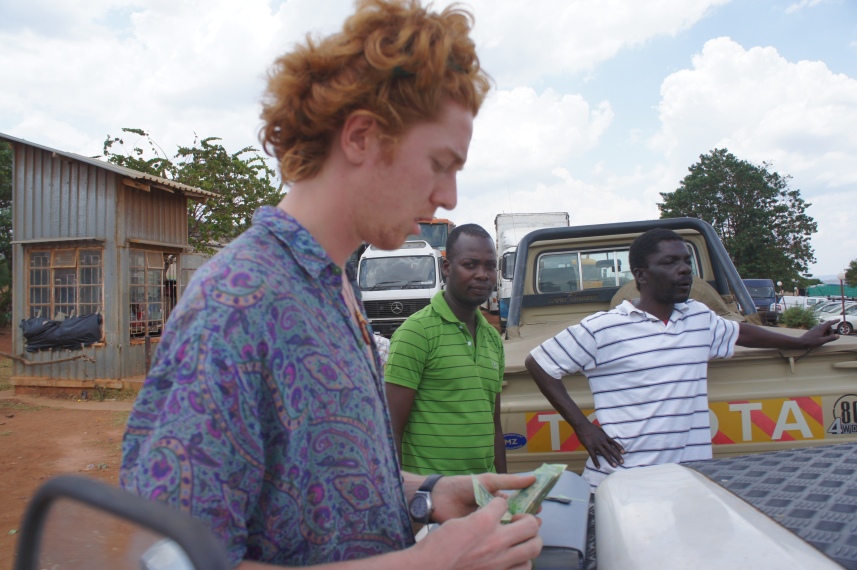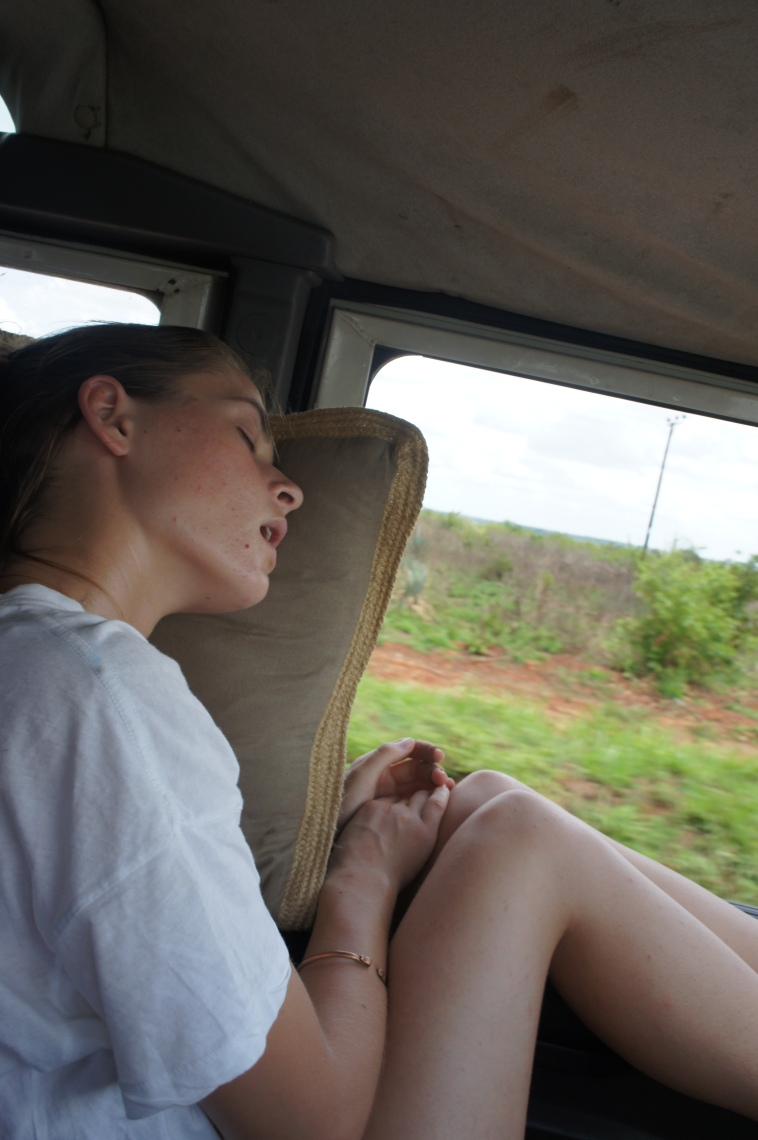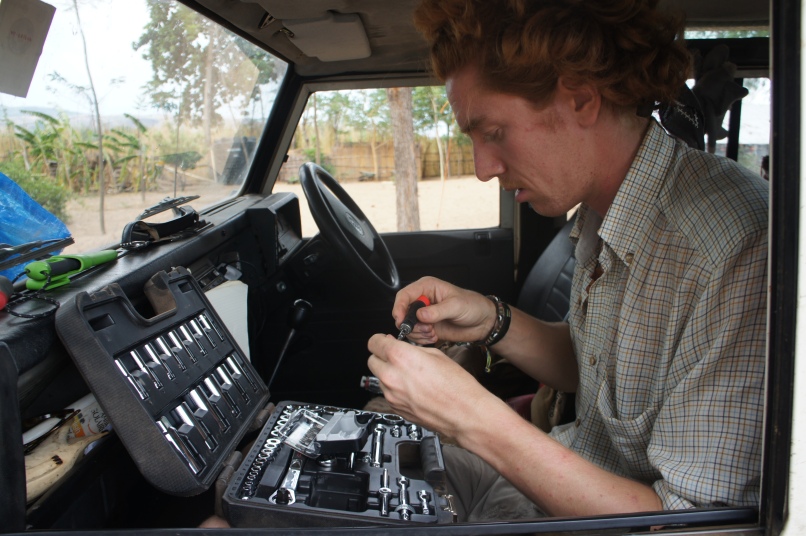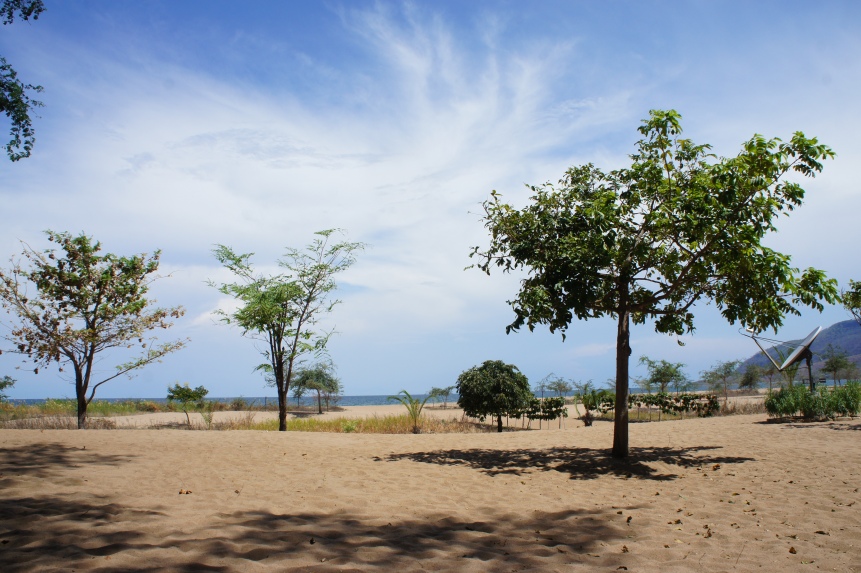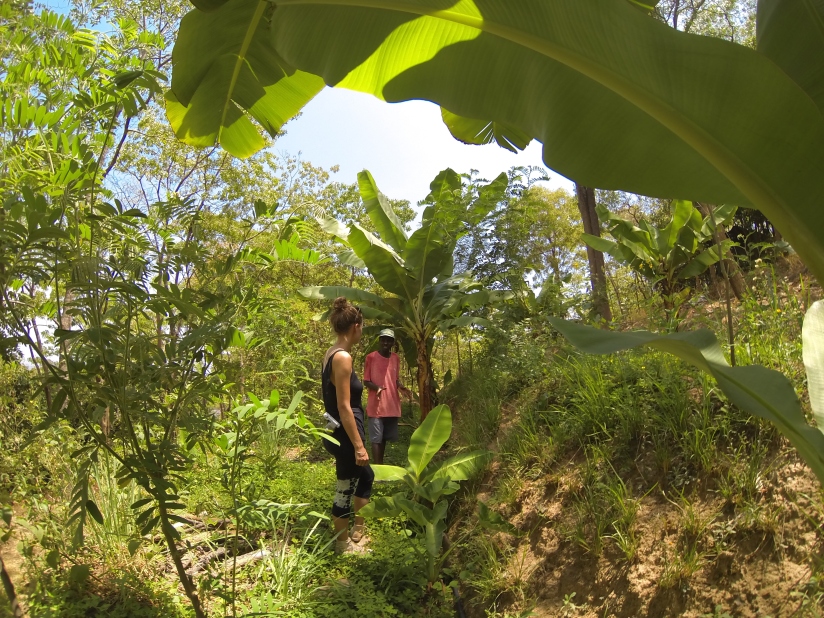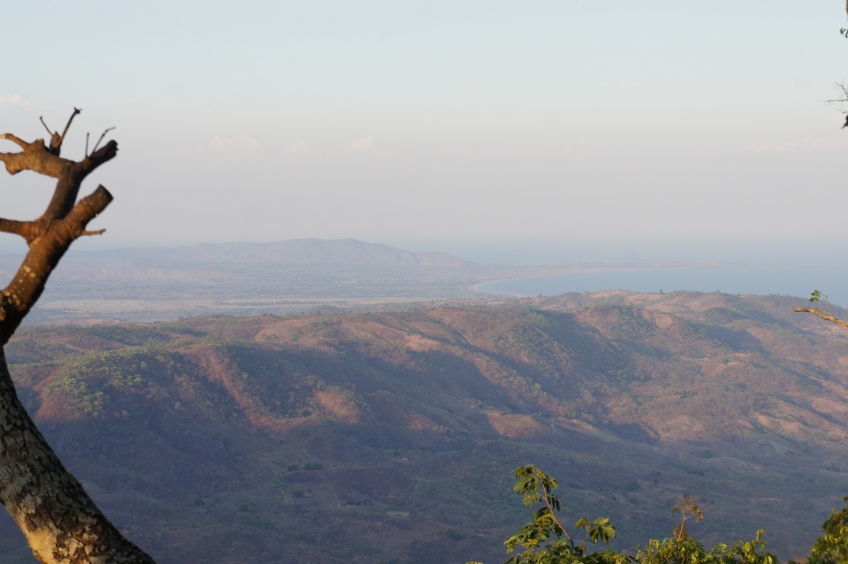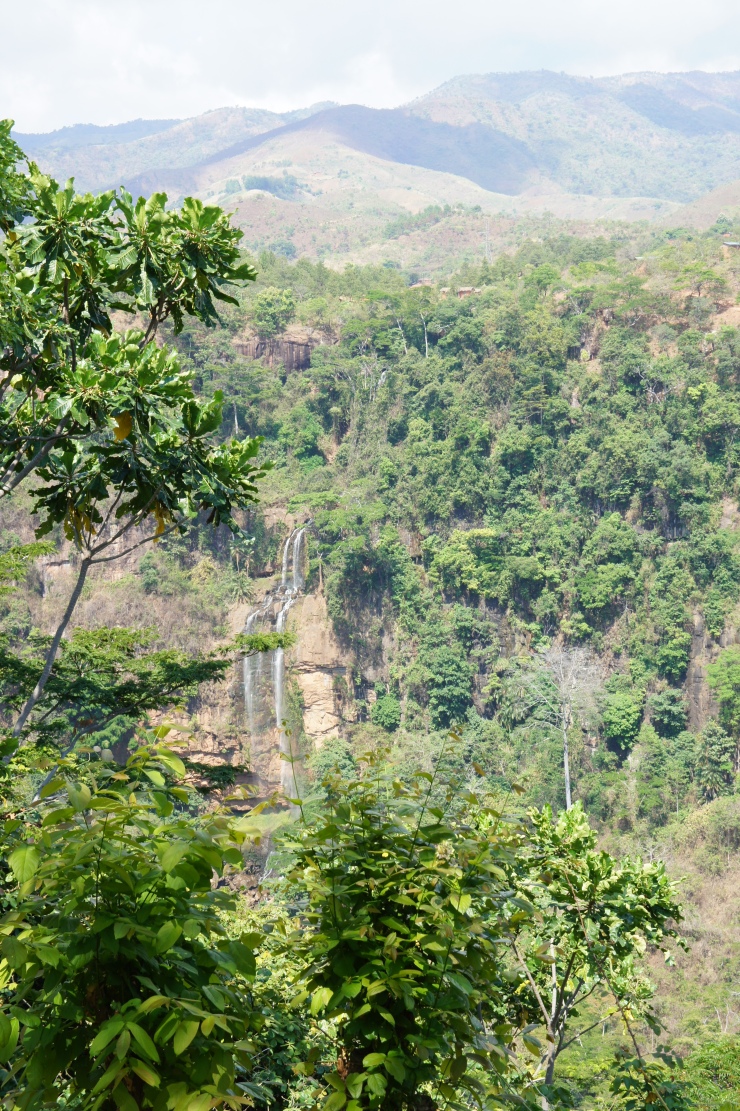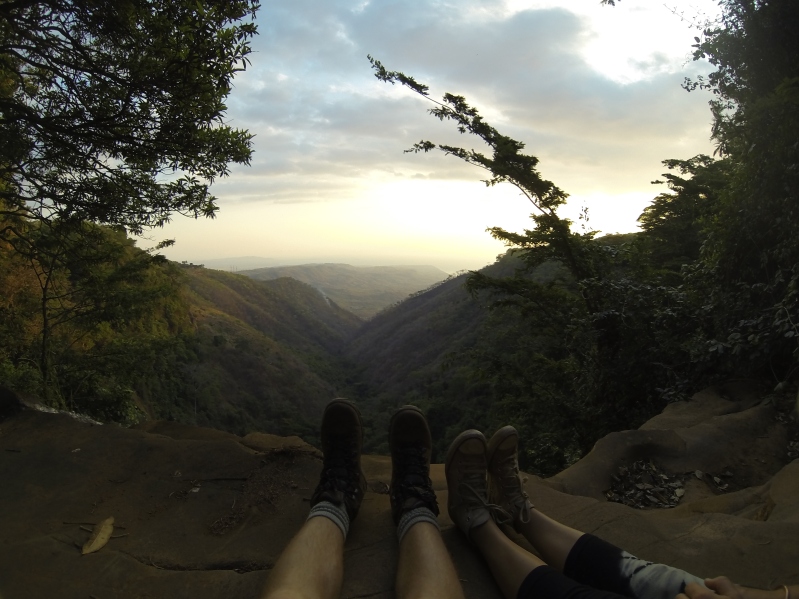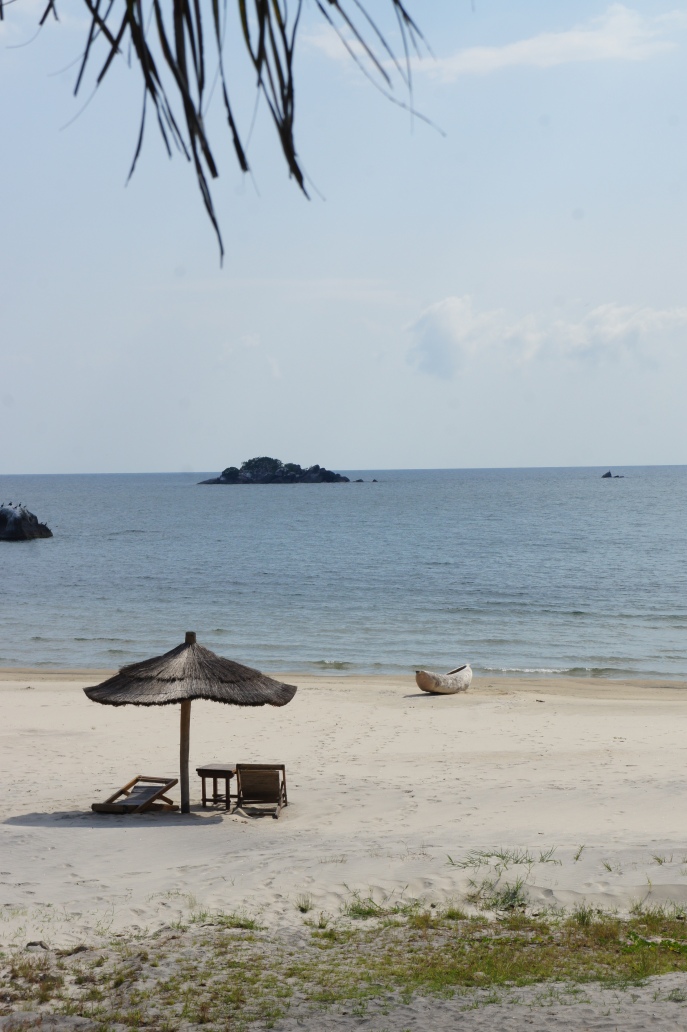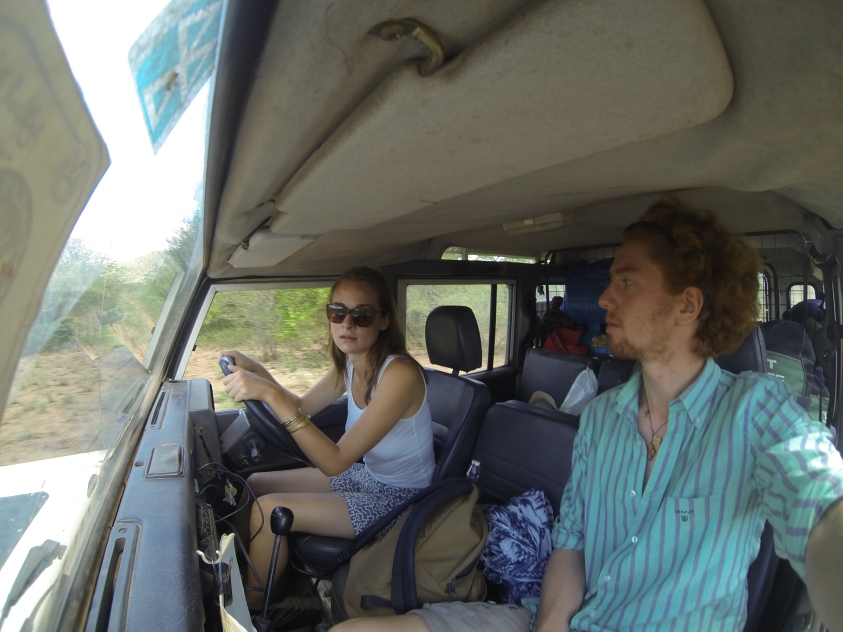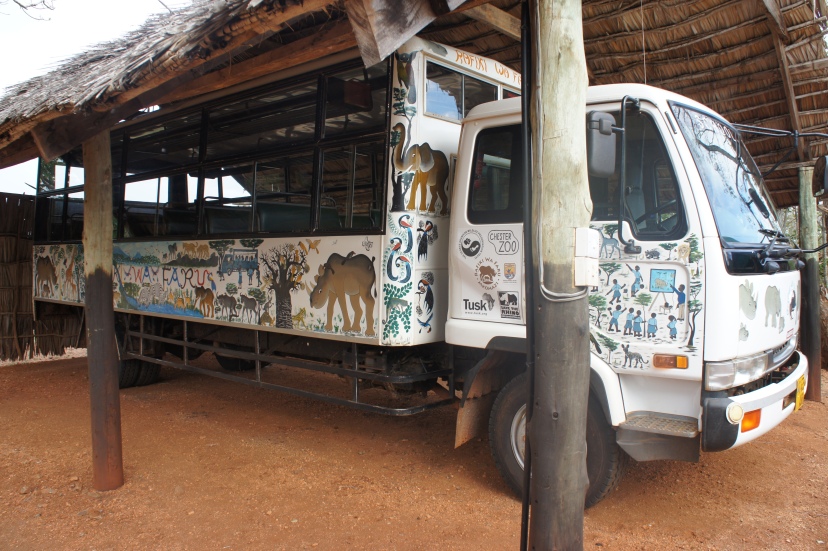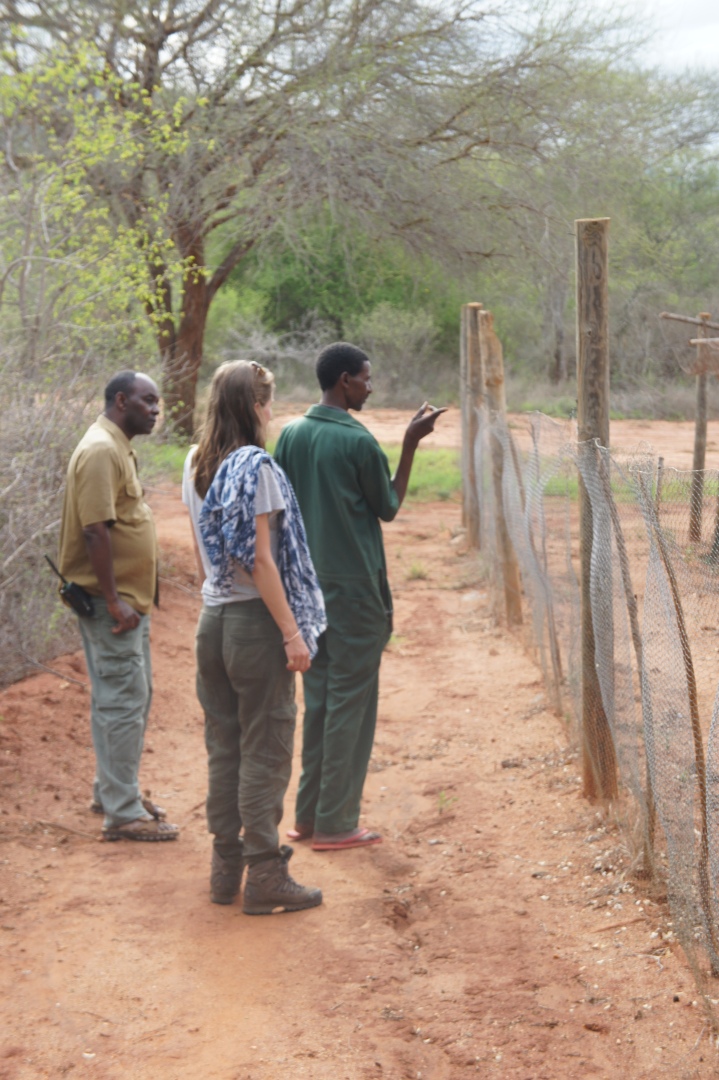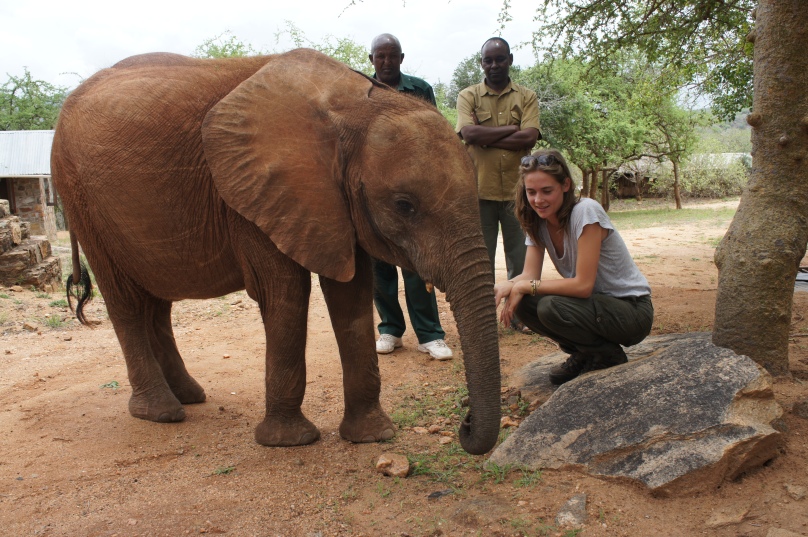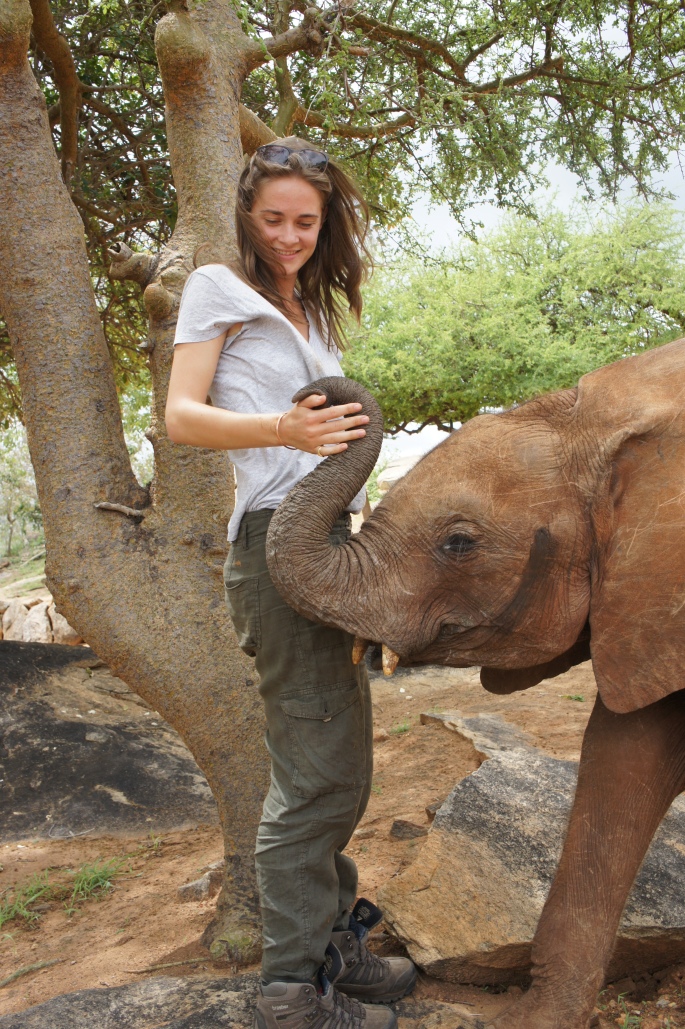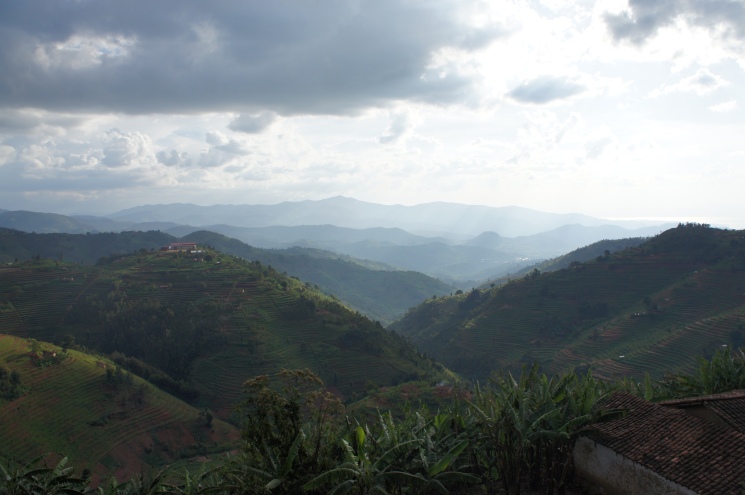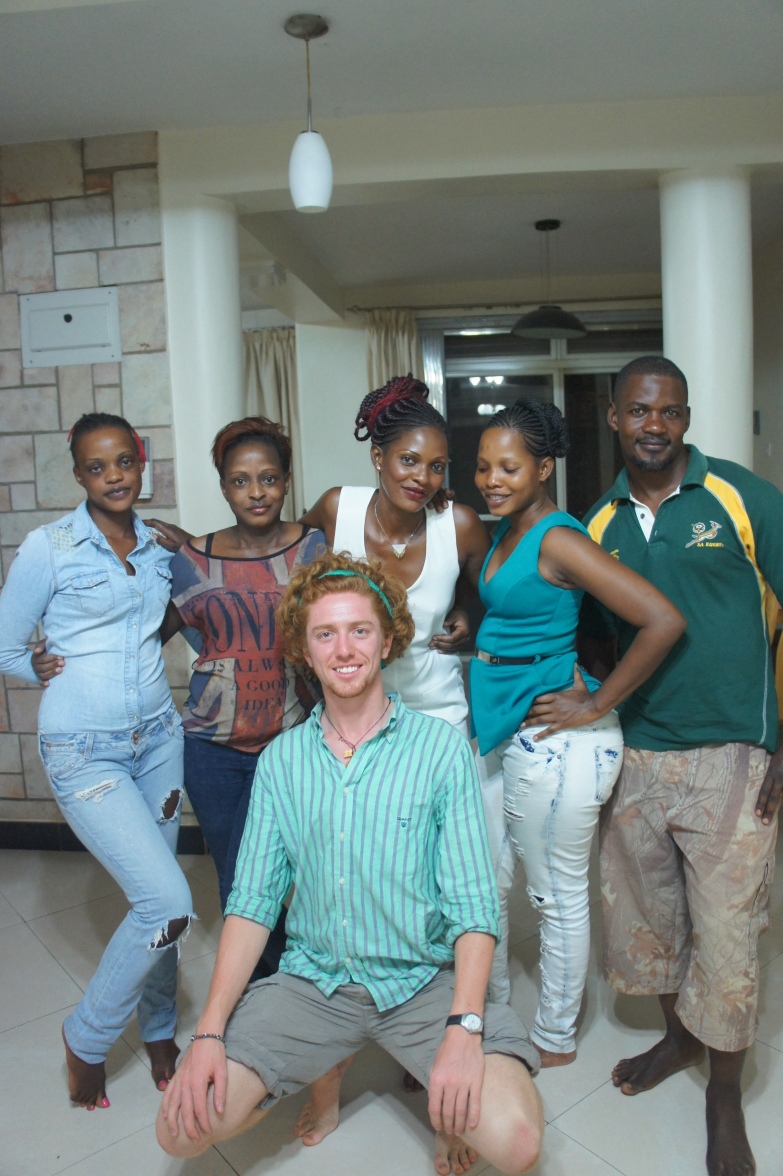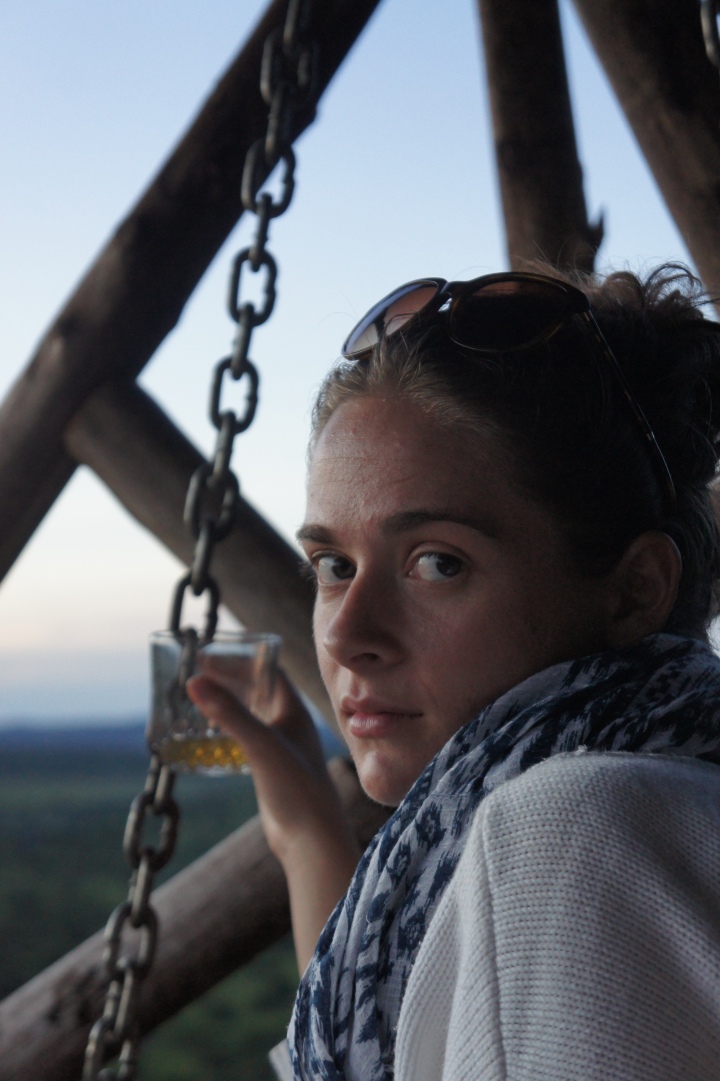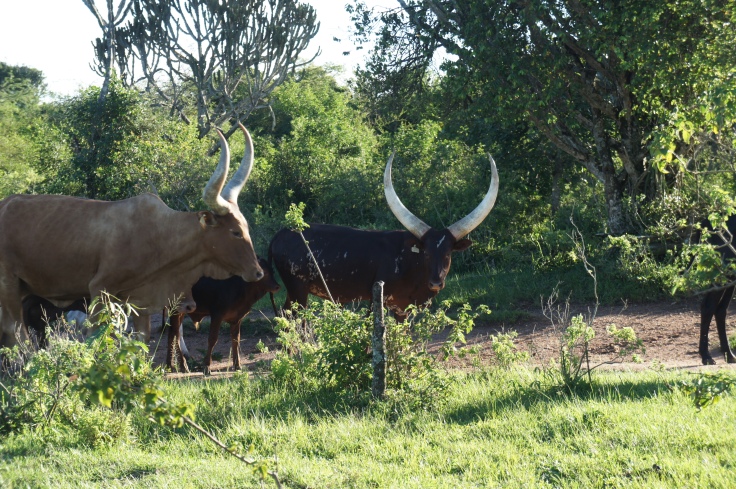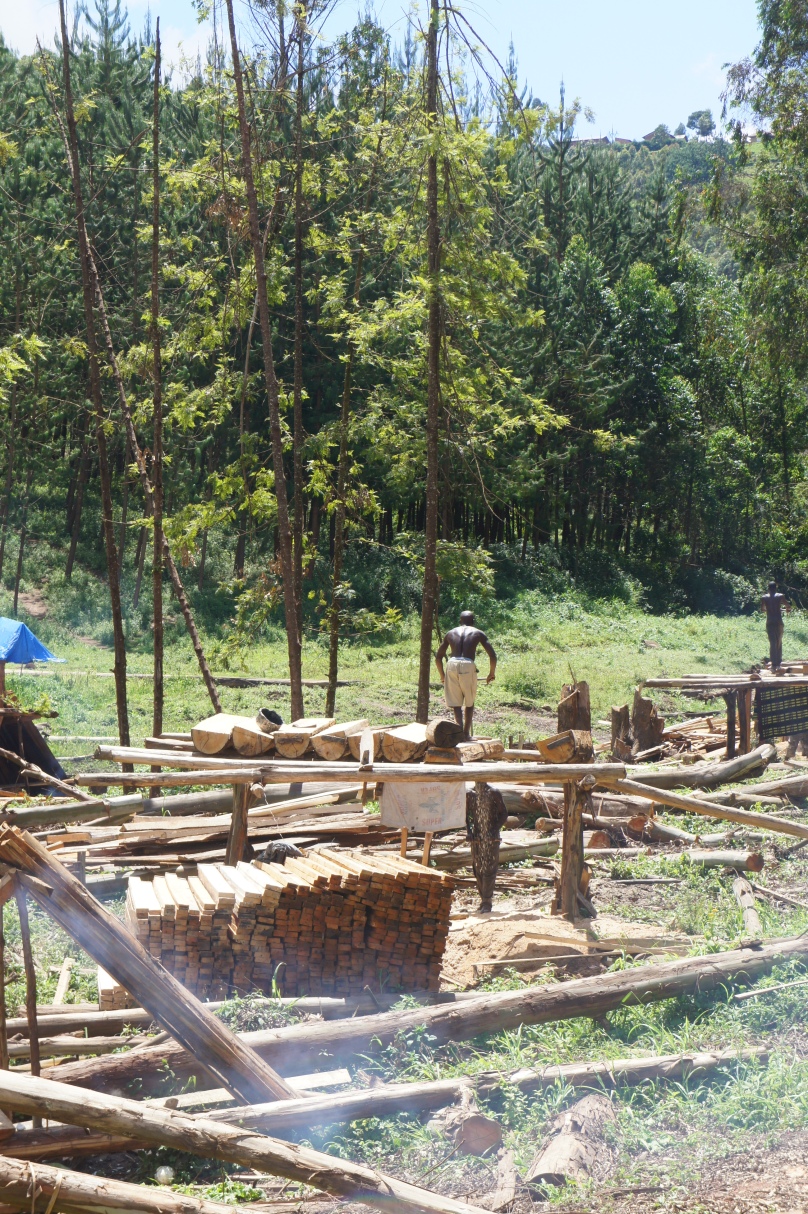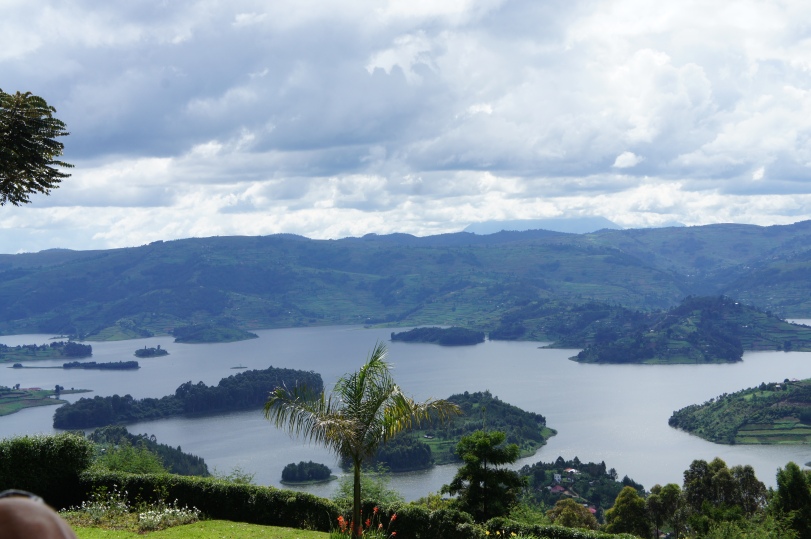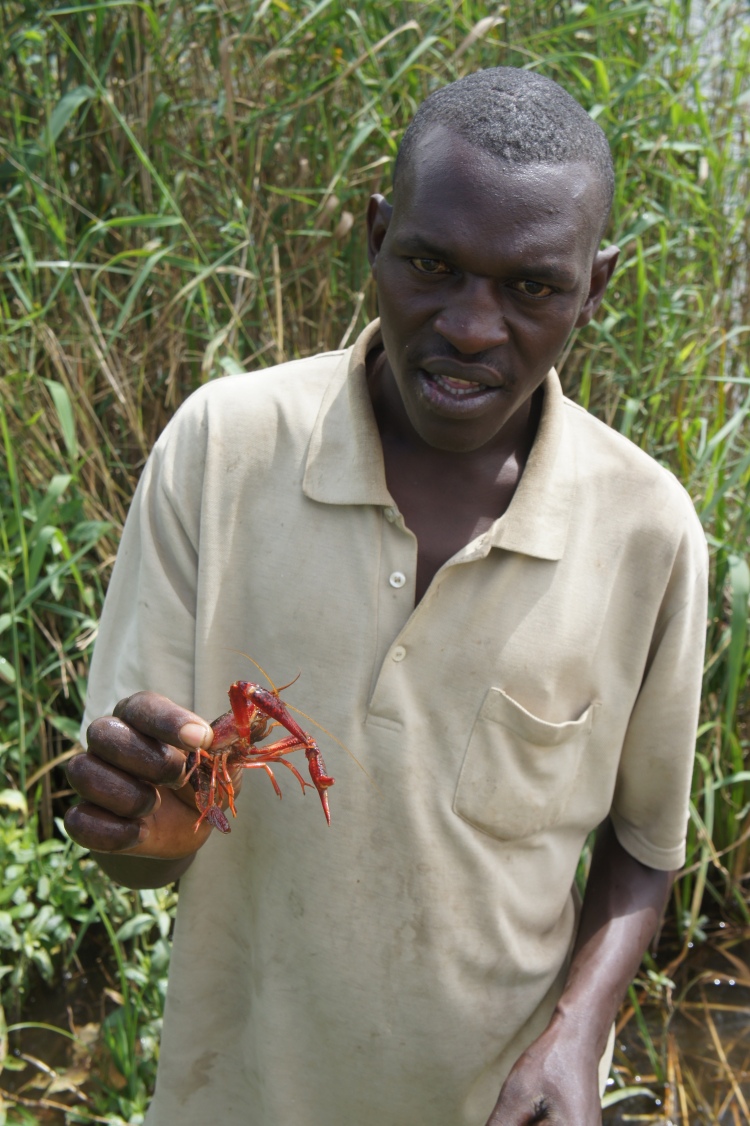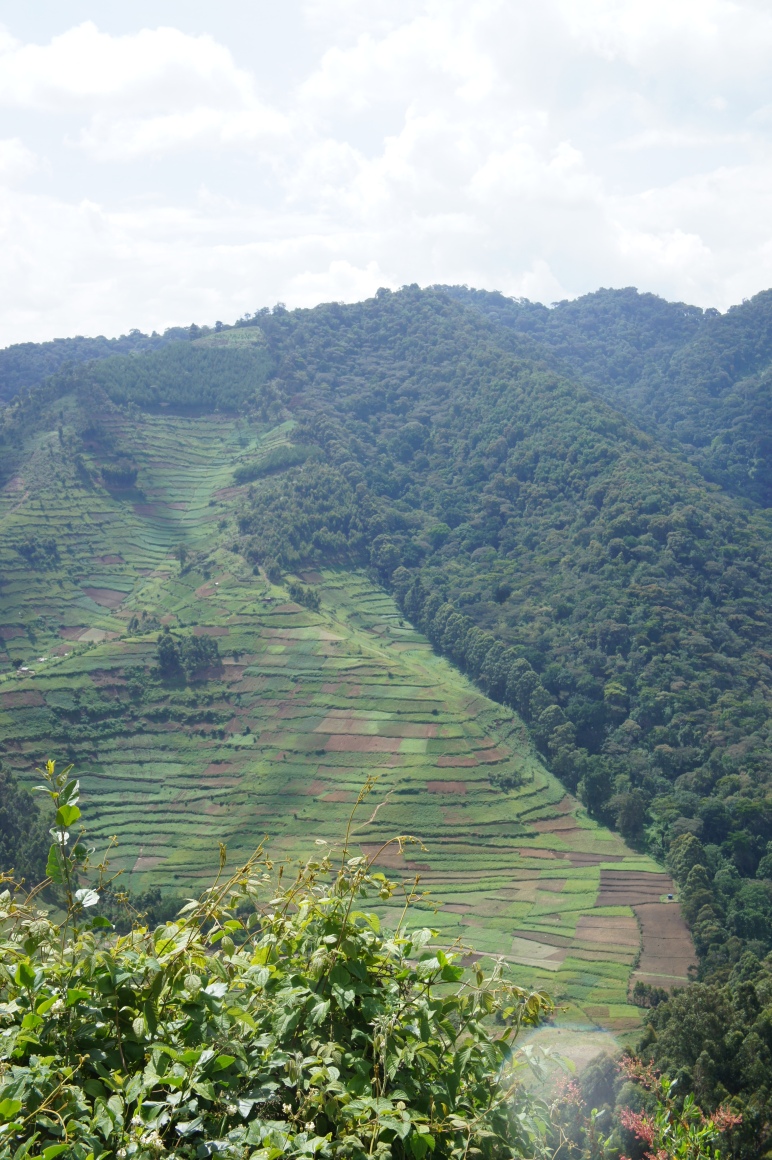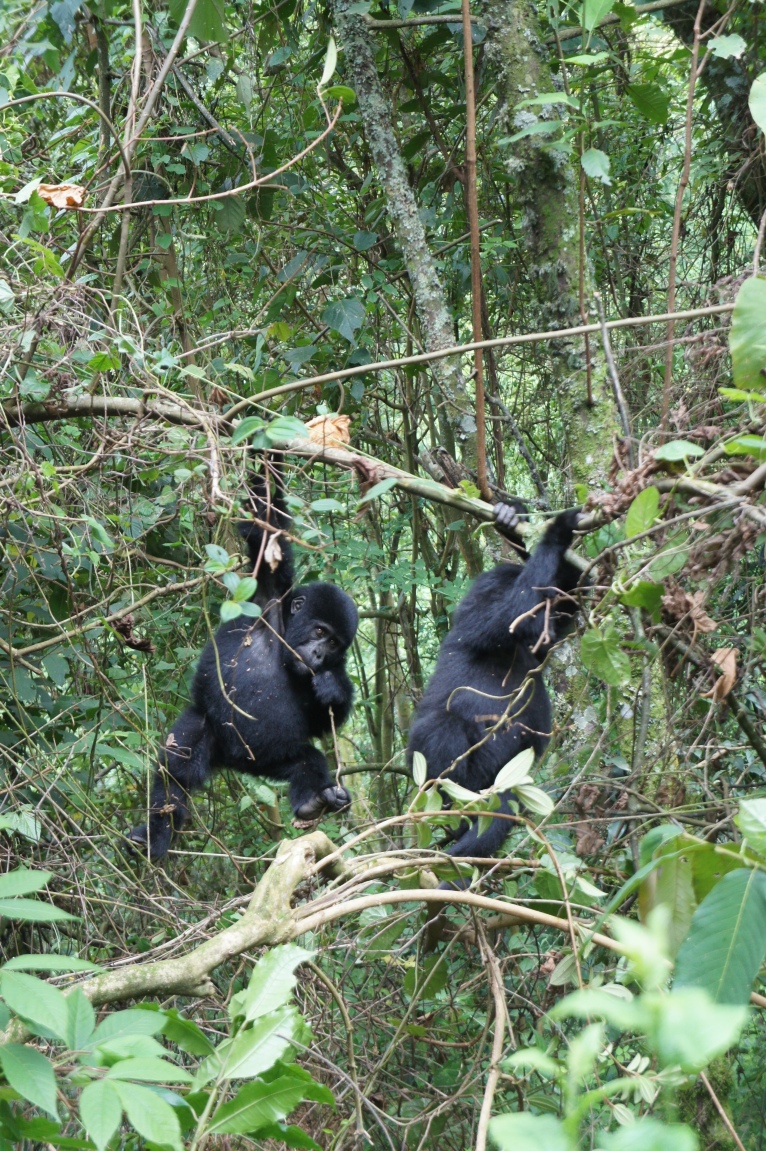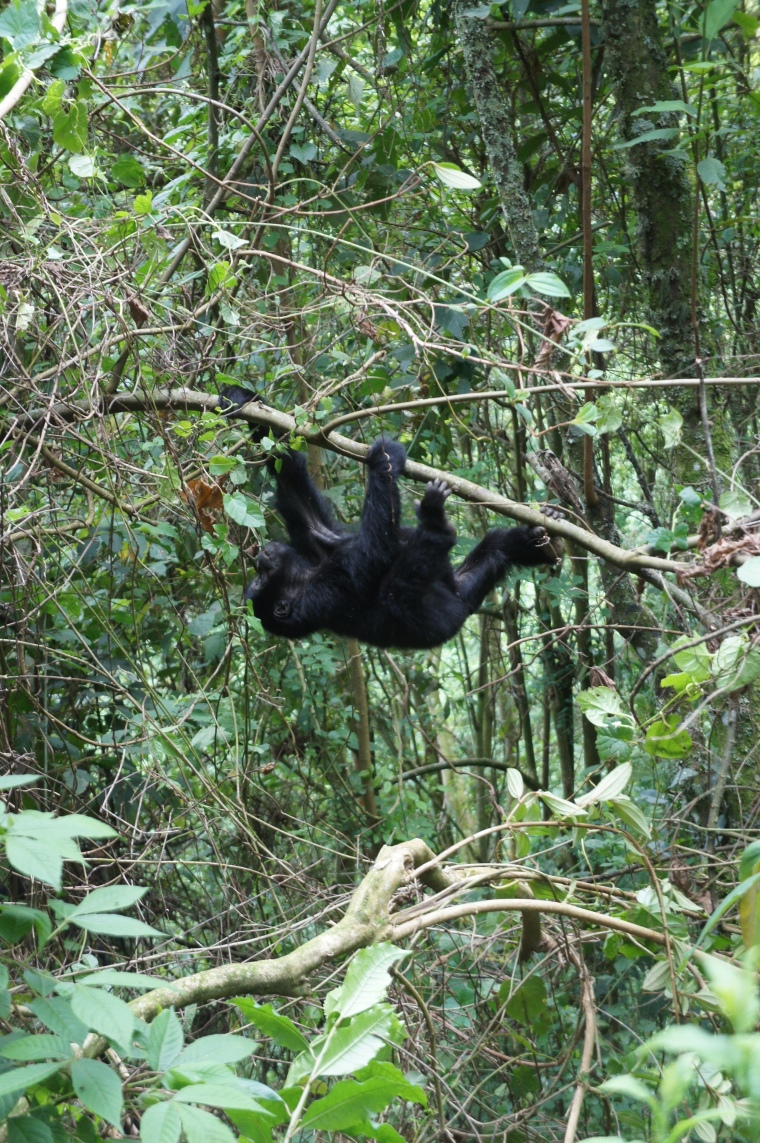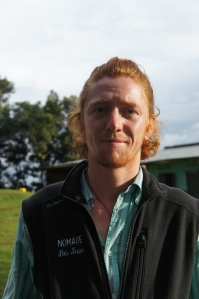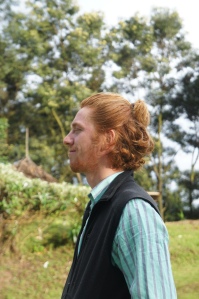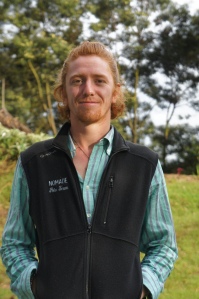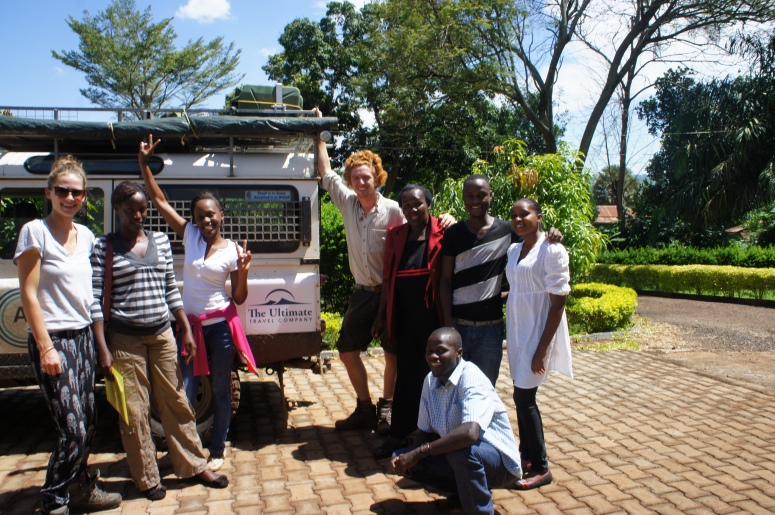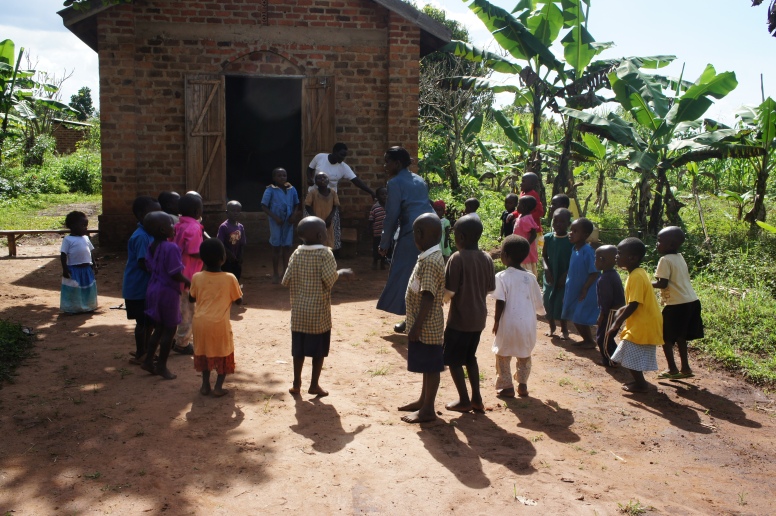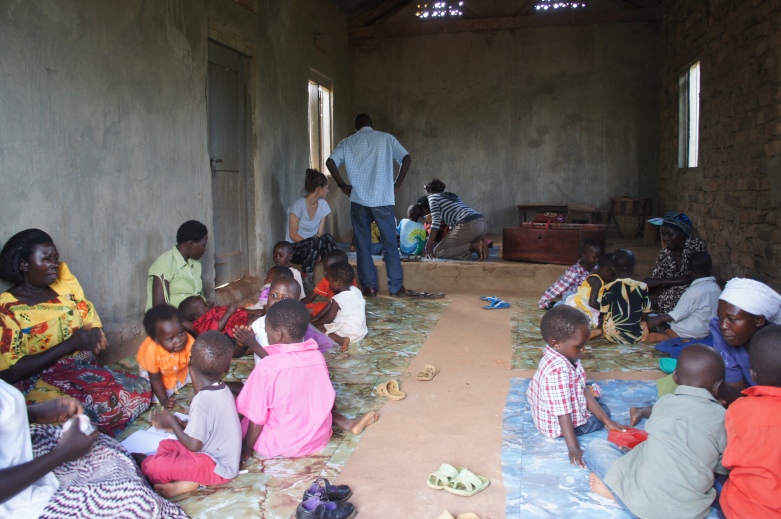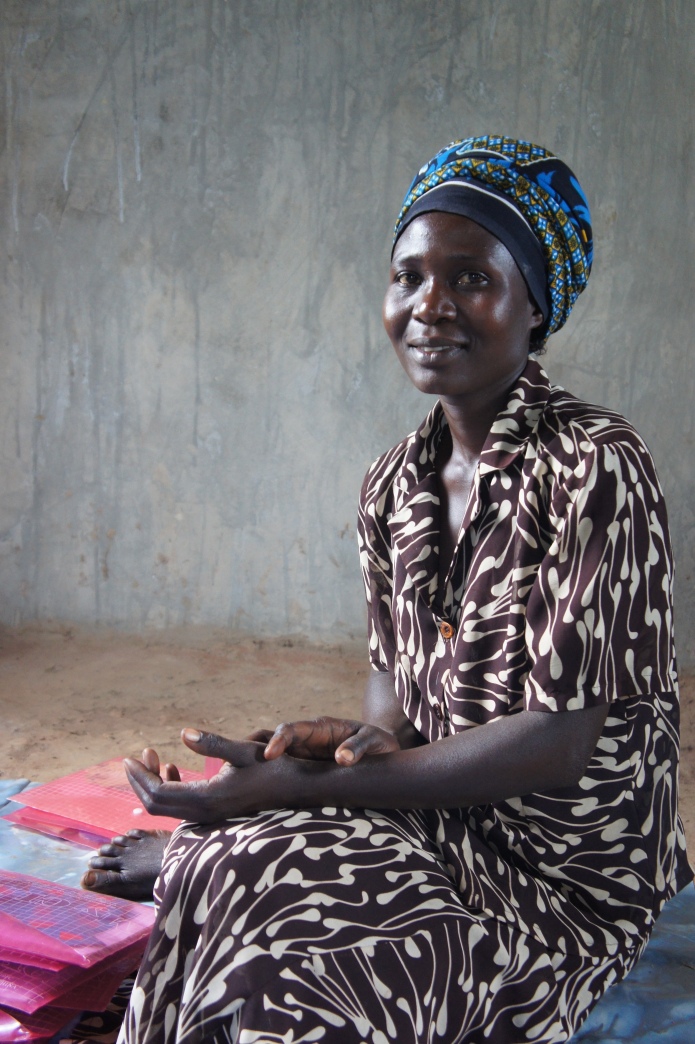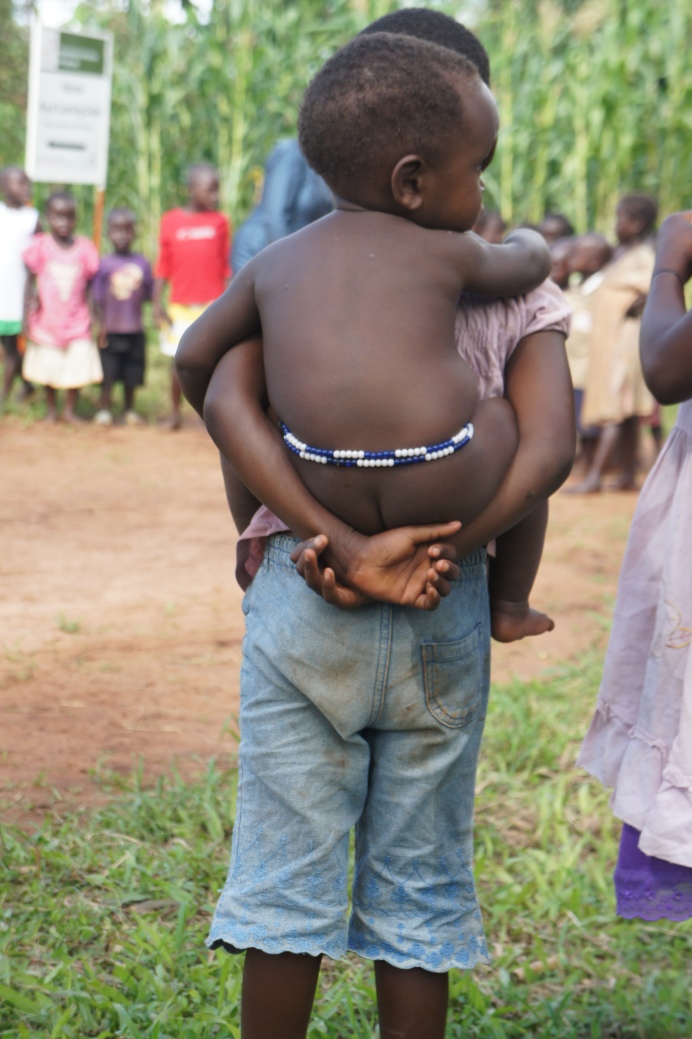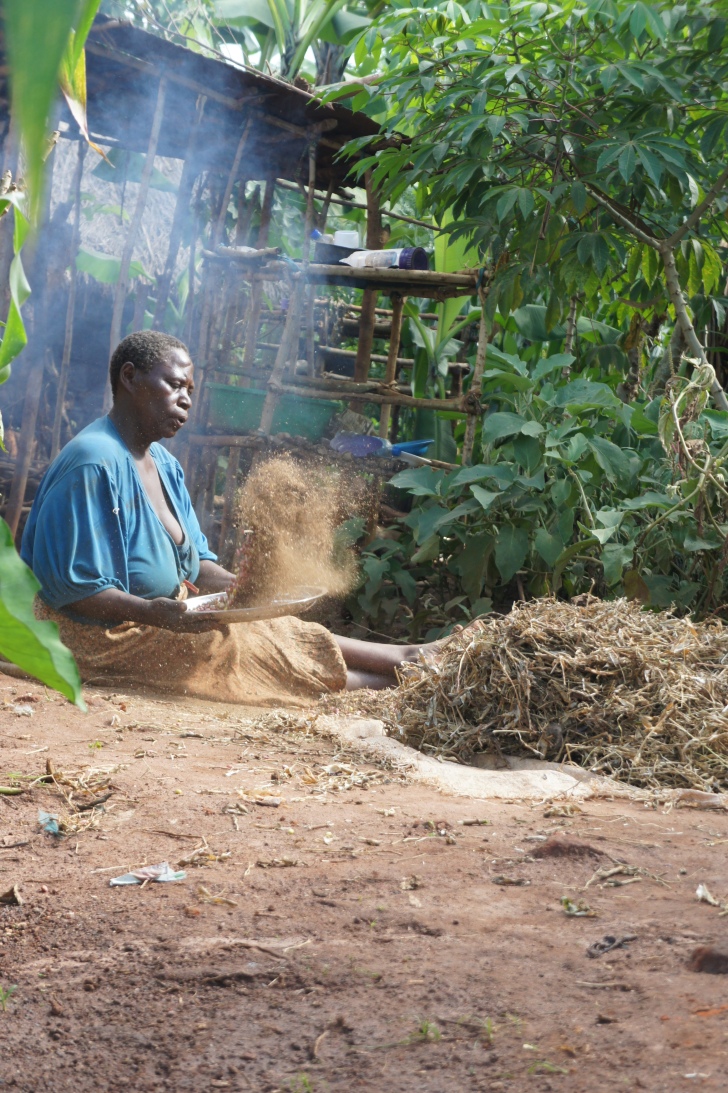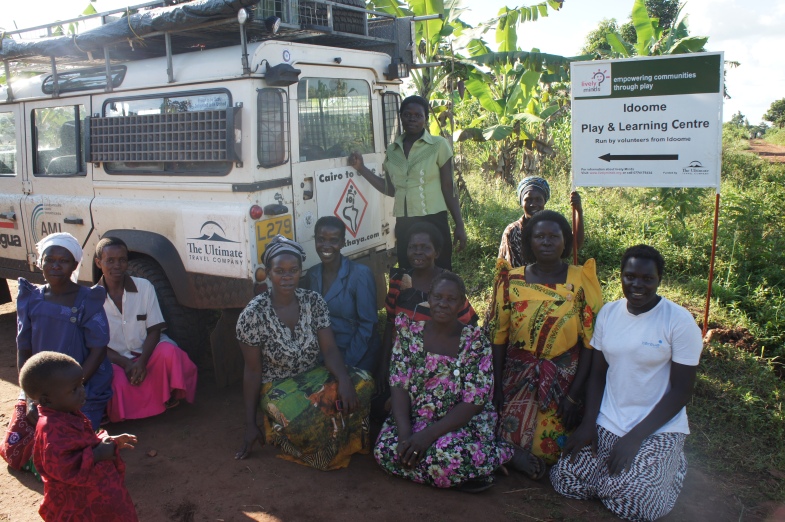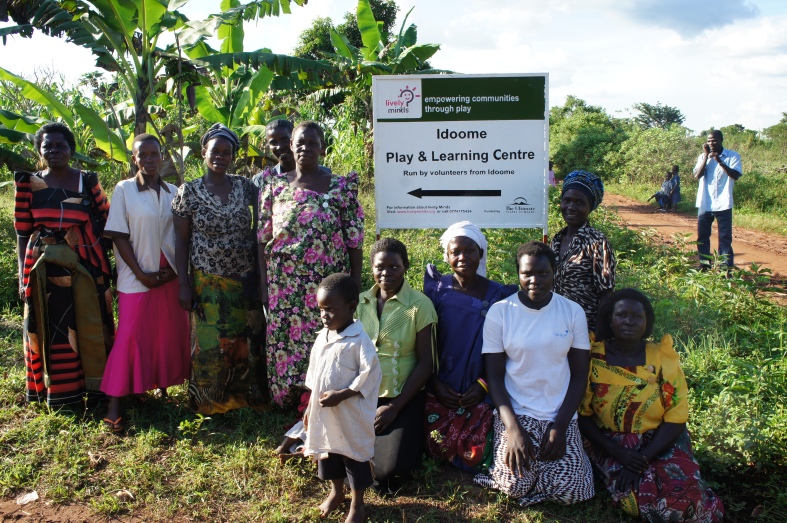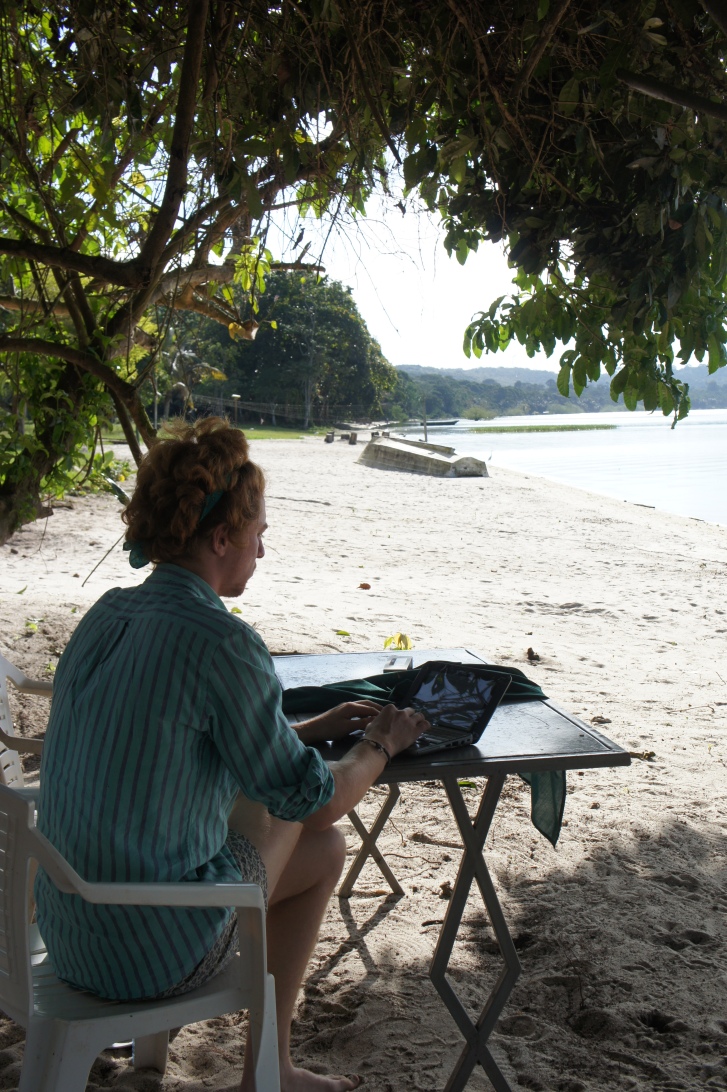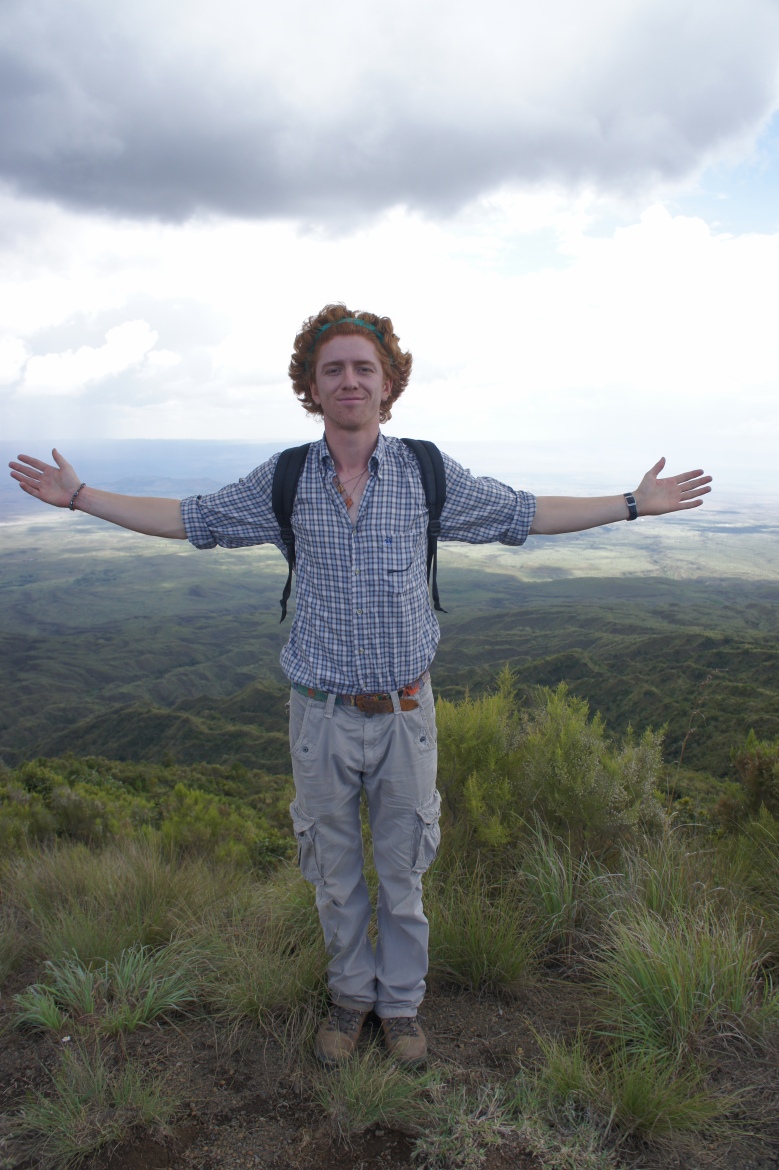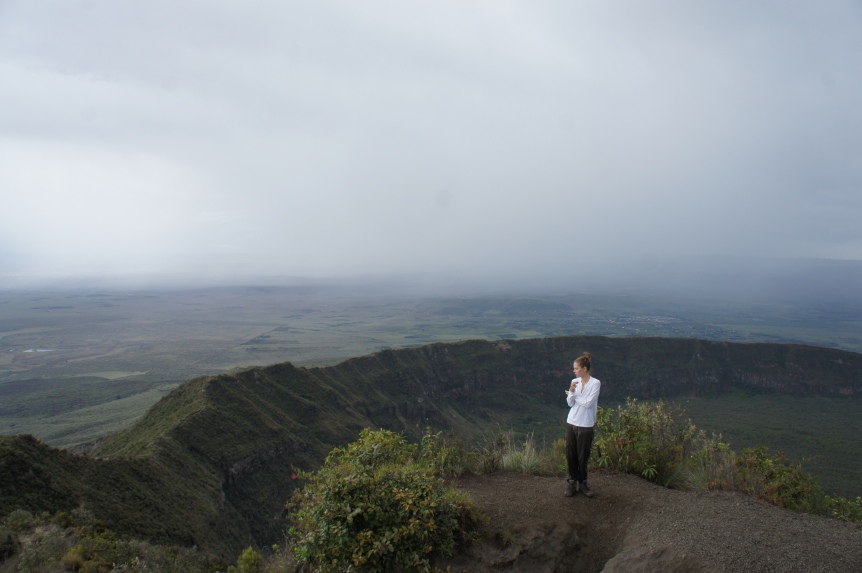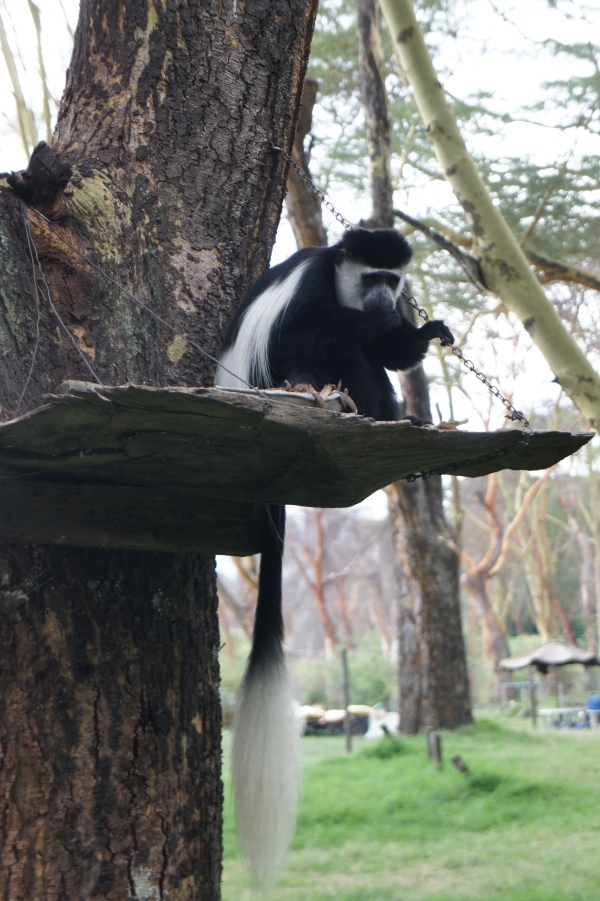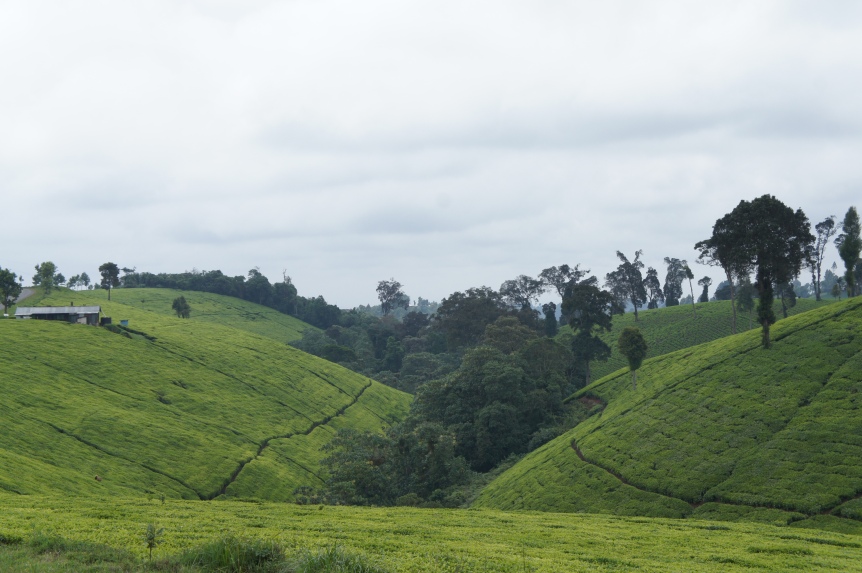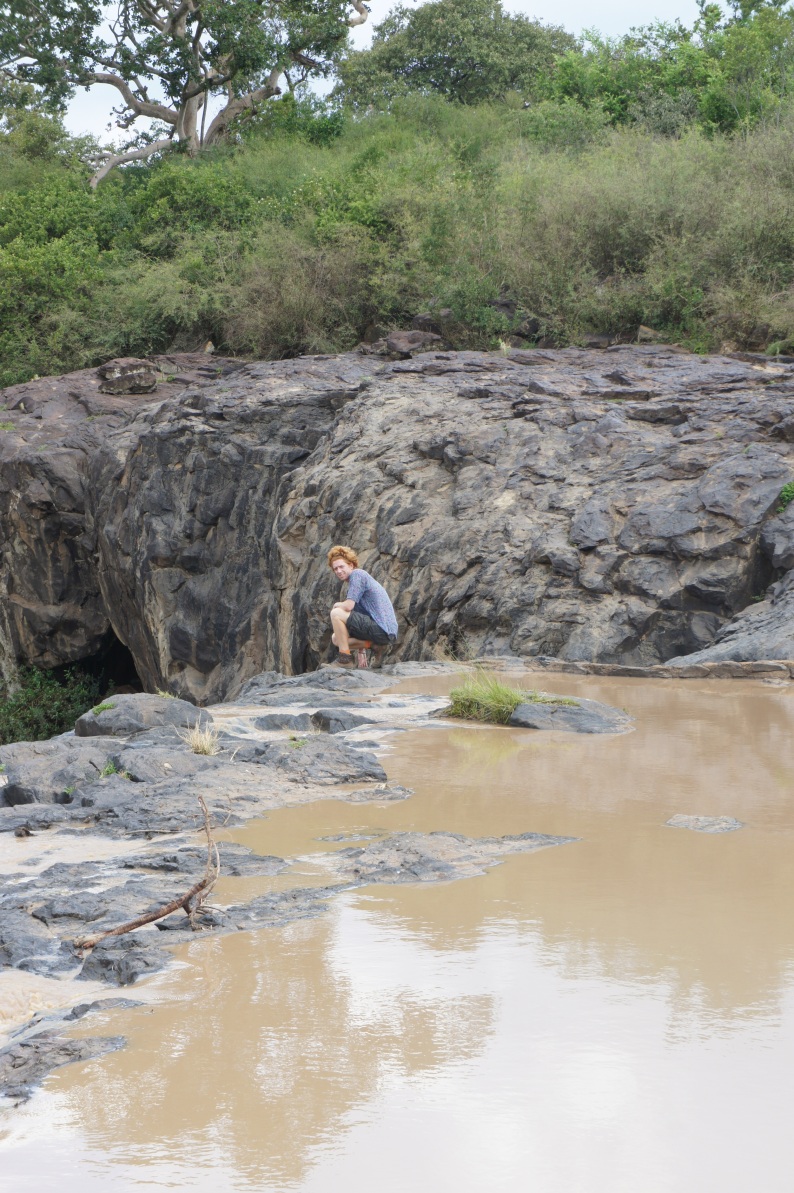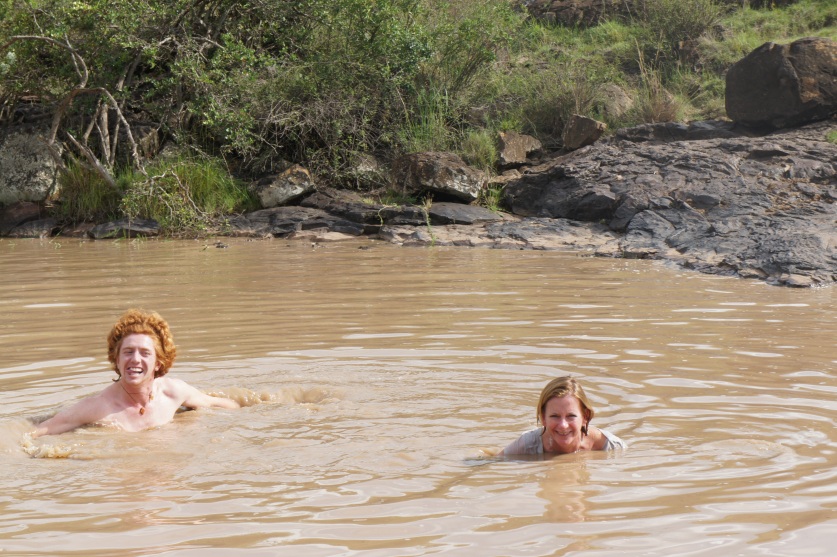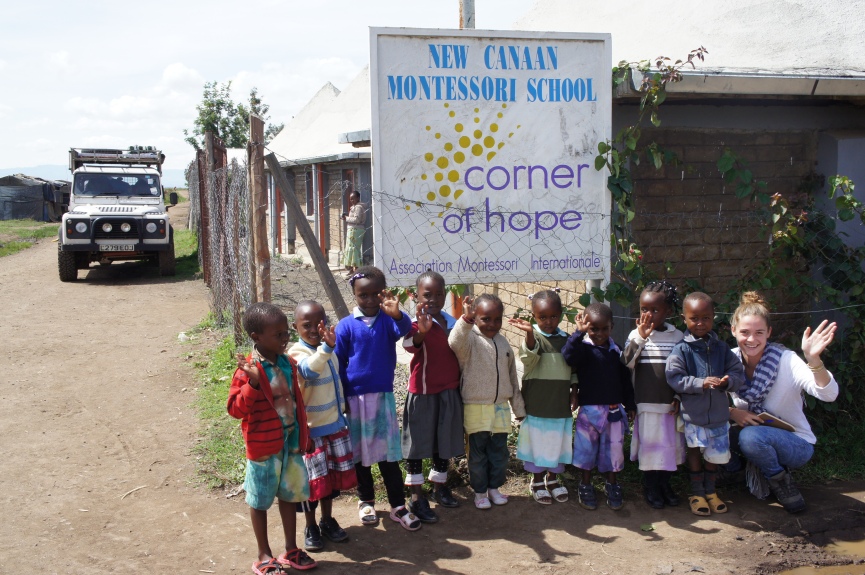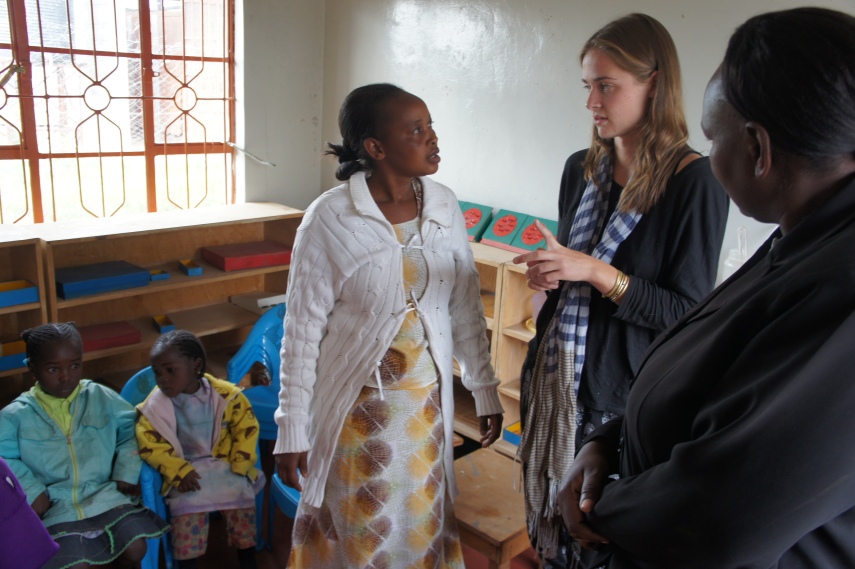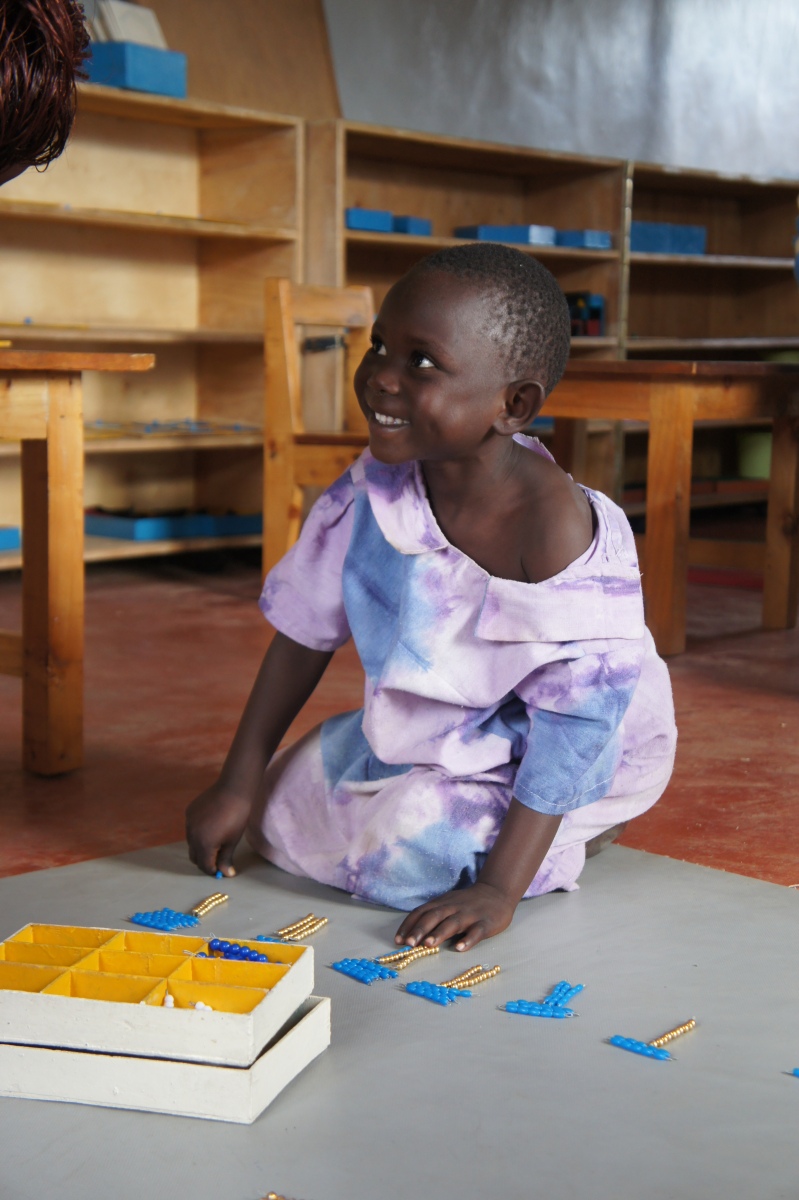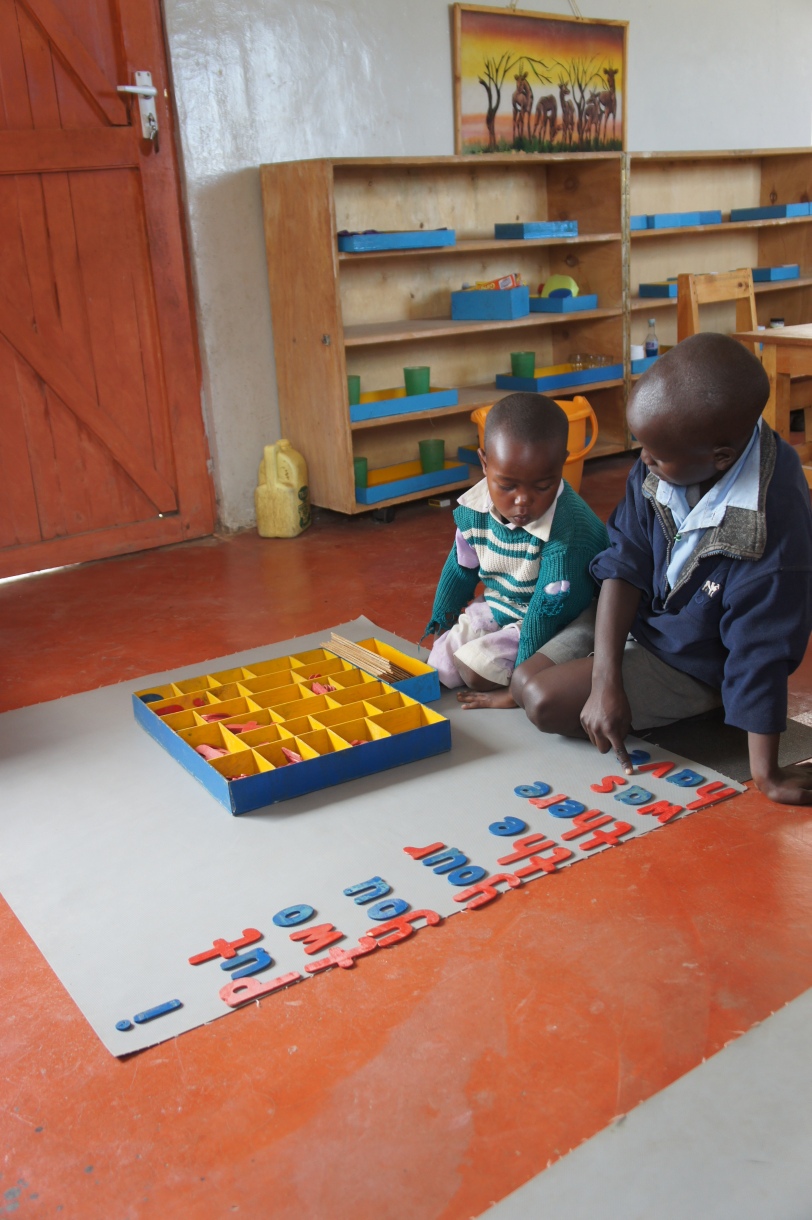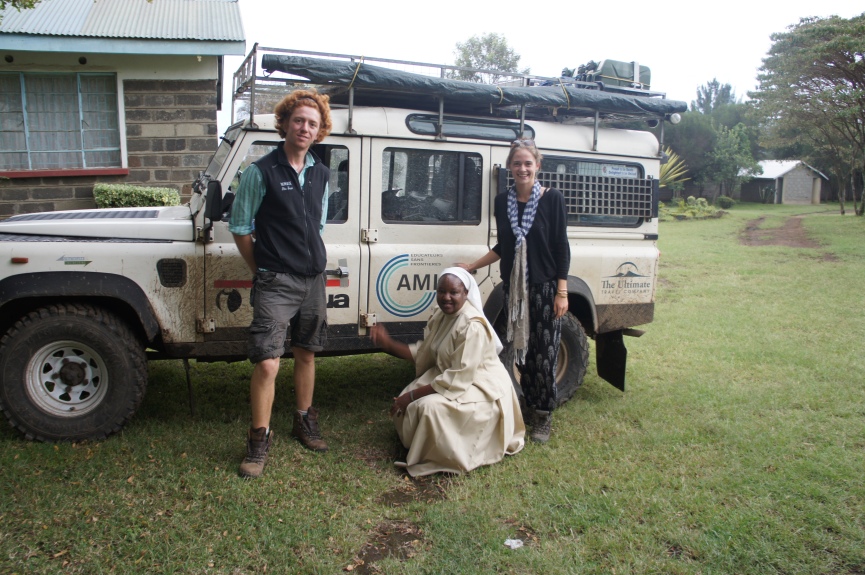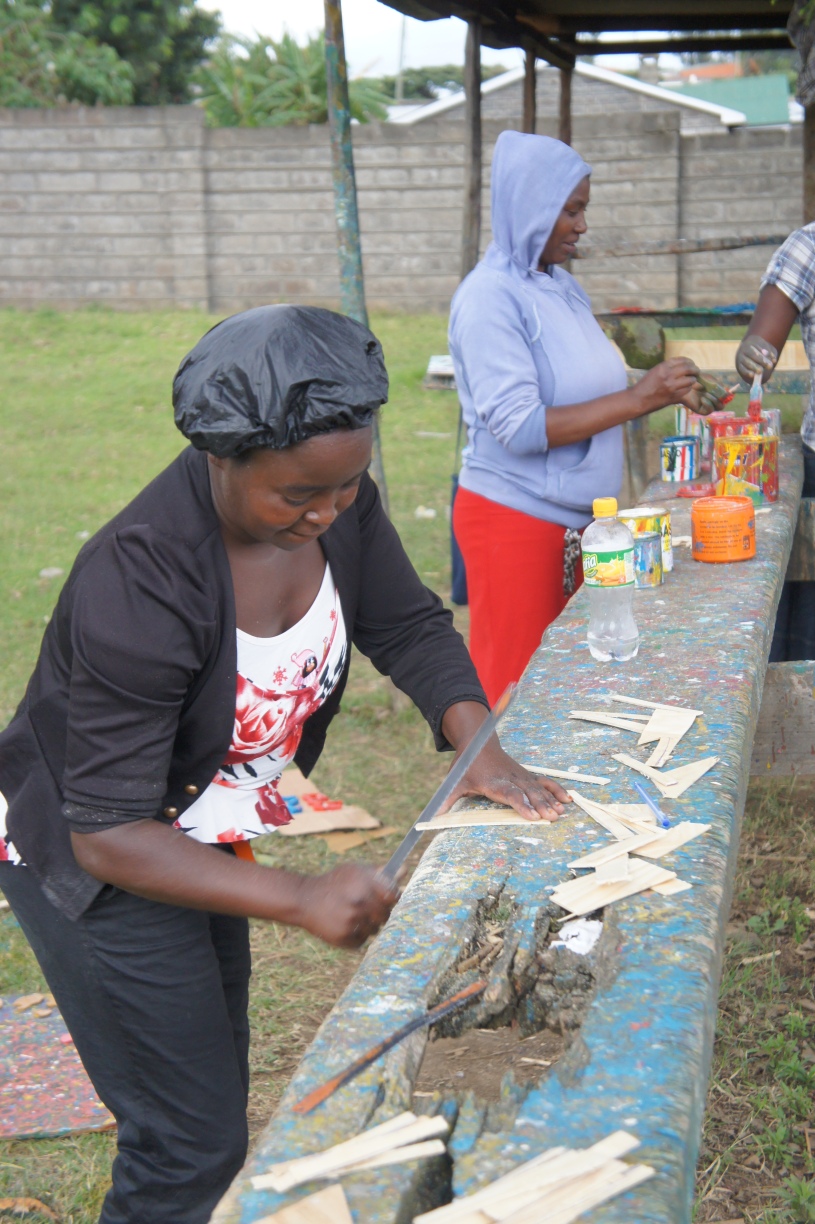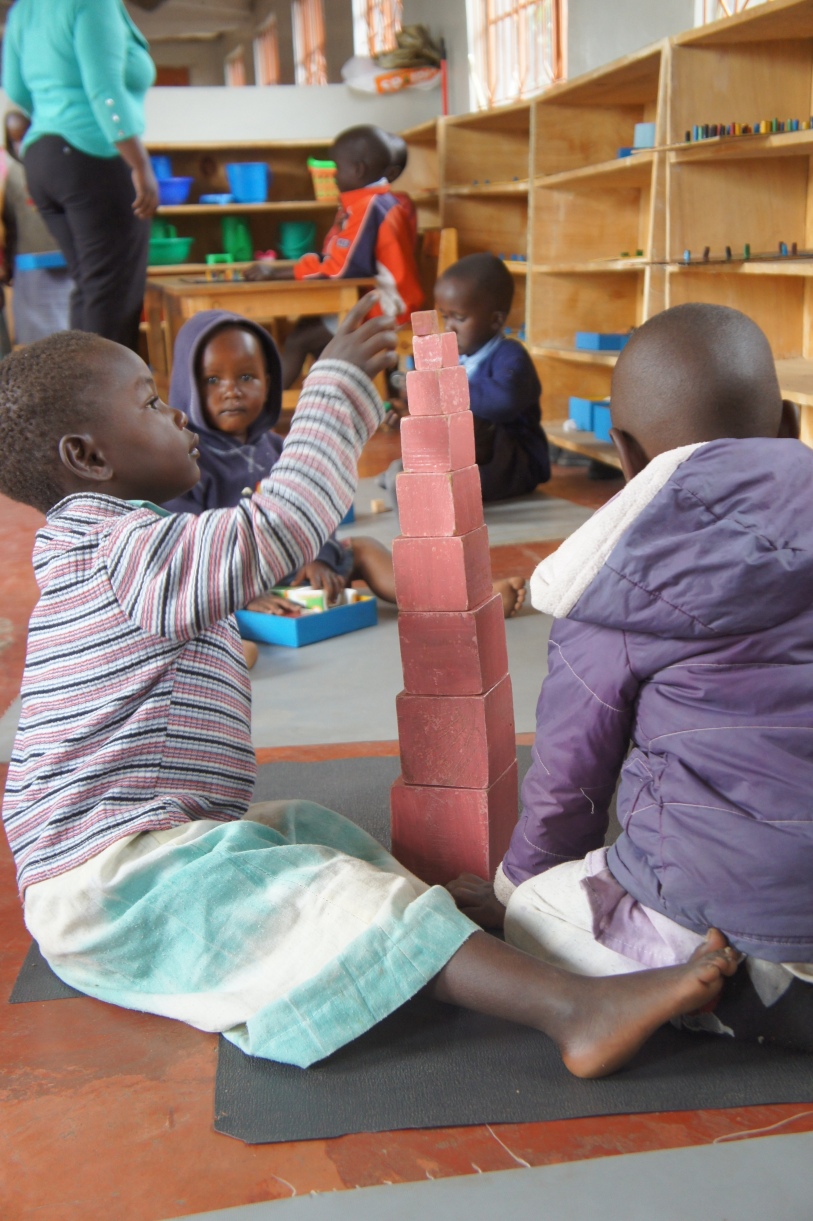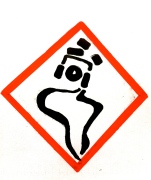
Hot. Zambia is hot. The Luangwa river – the only perennial water point in South Luangwa National Park – was very low and the hippos were struggling to find deep enough pools. Our campsite up the sandbanks seemed to be an elephant highway, where you were strongly advised to lock your food away in case it was sniffed by a long trunk… And then searched for by tusks!
We sadly never found the time to meet the South Luangwa Conservation Society team – supported by Tusk – but nevertheless made the best of the stunning park by treating ourselves to a game walk, following spoor to find out about the previous night’s activities.
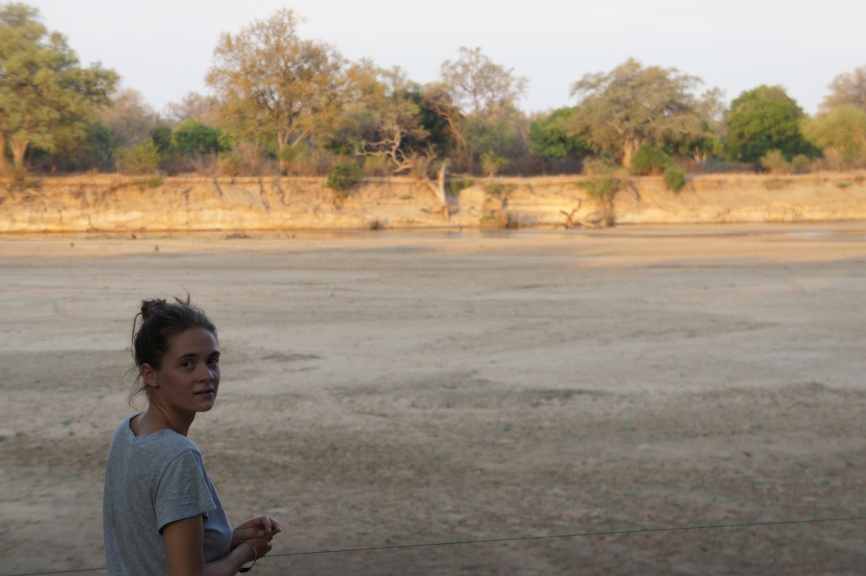
Sunset over the Luangwa River

Locals crossing the river

Just another day at the office
Having read Christina Lamb’s The Africa House, we were desperate to reach the Great North Road, but a detour via Lusaka was out of the question. Having paid for the park fee now made it cheap enough to drive through the park, however we were told “it is not advisable to drive through the park in December. The rains may have started and if you get stuck, no one can help. Some Germans were stuck for 3 days some time.” Yes, well the park is dry as a bone, and we would just turn back if the rivers further north were in flood. We promised them we’d radio in from the other side, and went off on our little adventure.
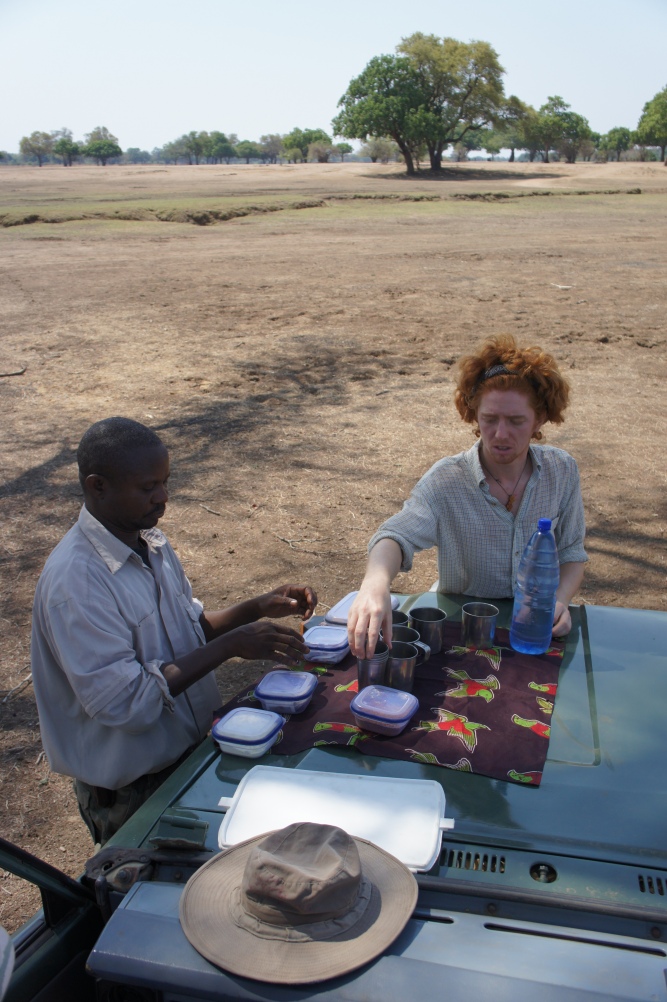
Well deserved breakfast after our walk
It was a beautiful drive, with the ever astonishing trees turning red and dropping their leaves in the ‘spring’. The further we went from the river, the less habituated the game was. From being skittish, the game became altogether absent, there really was no water. But that was good for us! We crossed a few very sandy 200m wide river beds, hoping rain hadn’t fallen upstream. It was risk well worth taking, but we didn’t know that the adventure was only just starting…
Having missed the rains and crossed the park, we still had to get up the Muchinga Escarpment, a climb we had somewhat underestimated. First gear, low range, slipping, sliding, bouncing, we got half way to the top. Then bend number 15 got the better of Mulungu, there was no way around the rocks, and the sand provided no grip. Out of solutions and with the sun fast disappearing, I called it a day, hoping we’d see the problem in a different light the next morning. We parked on a flat-ish bit of the ‘road’, put up the tent and boiled water for pasta. Just when the adrenalin dropped and Emma had finished exploring all the possible worst case scenari, we heard an engine. It was coming from the top, we could see the beam of lights and hear the voices. If other cars could make it down, we could make it up! I waved them down and was relieved to see the Frankfurt Zoological Society logo on the side of the 4×4, we were on the same team. Some four rangers, a lady with a questionable profession and the driver all greeted us and offered their help with glee. The driver claimed to go up the escarpment twice a week and offered to drive our up for us, ‘your car can do it, but you are a poor driver’. Thanks.
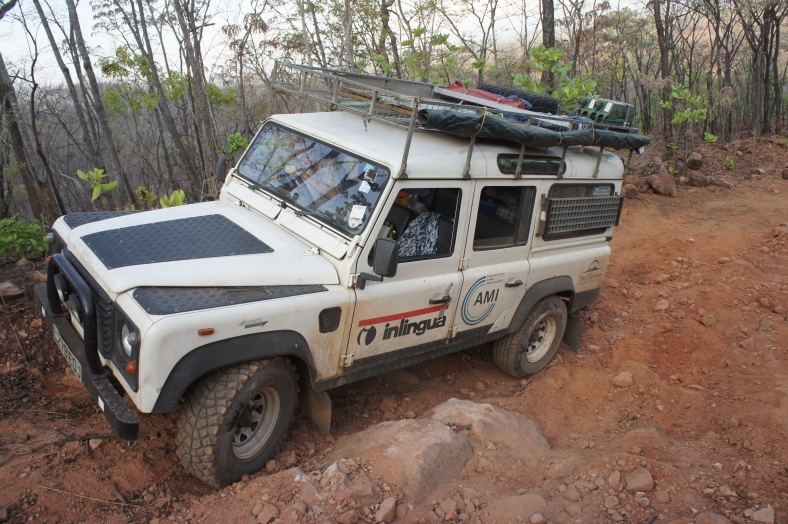
Struggling up the Muchinga Escarpment
We packed up again, put dinner in tupperwares, and got into the car. How was he going to deal with this treacherous bend? Simply by flooring it. Never have I ever witnessed an overloaded Land Rover go so fast over rocks in such low gear, hanging on to the dashboard for my life and Emma not even daring to open her eyes in the back. Through sheer momentum, our guardian angel carried the car over the biggest boulders it had ever seen. 45 minutes later we had reached the summit, not quite sure if we still owned a complete car or just bits of it…
After profusely thanking our driver and seeing him and his armed friends walk back down the hill, Emma and I looked at each other in disbelief. Mulungu was intact, we were out of harm’s way, we didn’t have to pay to cross the park again and risk the rains. In an ironic twist of fate, we sat down to eat, physically exhausted and mentally drained, when the heavens opened. The rainy season was finally here! In absolute hysterics, we scrambled onto the roof to put our tent up and eventually got back into the car to eat our pasta, soaked to the bone. Had we stayed the night half way up the hill and the rains started, we would never have been able to make it up the next day, and even less cross back through the park in full flood. We would have been stuck for months!
After possibly the best night’s sleep we’ve ever had (with a river flowing under our car), we were back onto normal roads again. Heading north, we reached Shiwa N’gandu in just a few hours and stayed at the magical Kapishya Hot Springs for a very restful three days. The legendary English manor house in the middle of the African bush was worth the detour, if only to gain more of a feeling as to why Stewart Gore-Brown fell in love with the place.
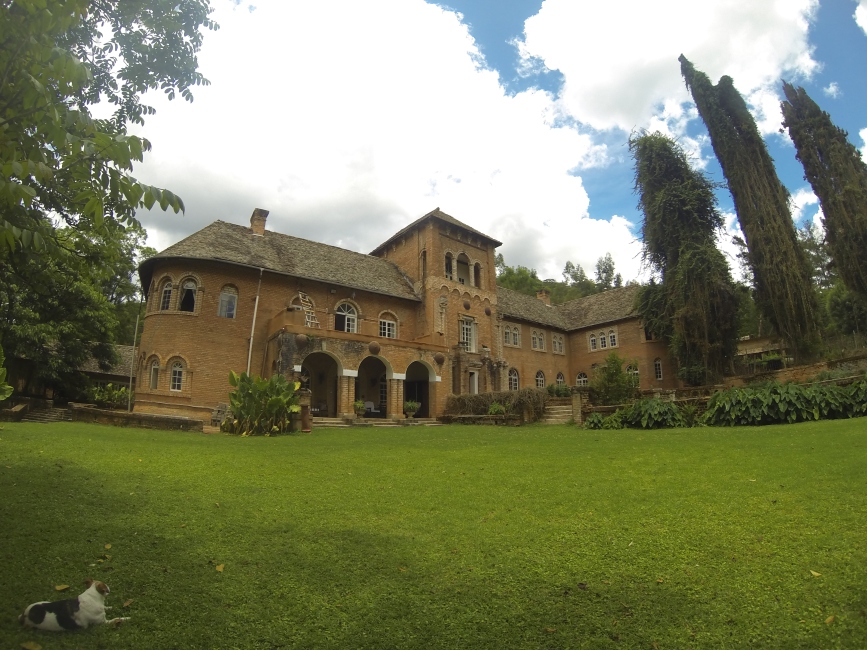
Shiwa Ngandu – The Africa House
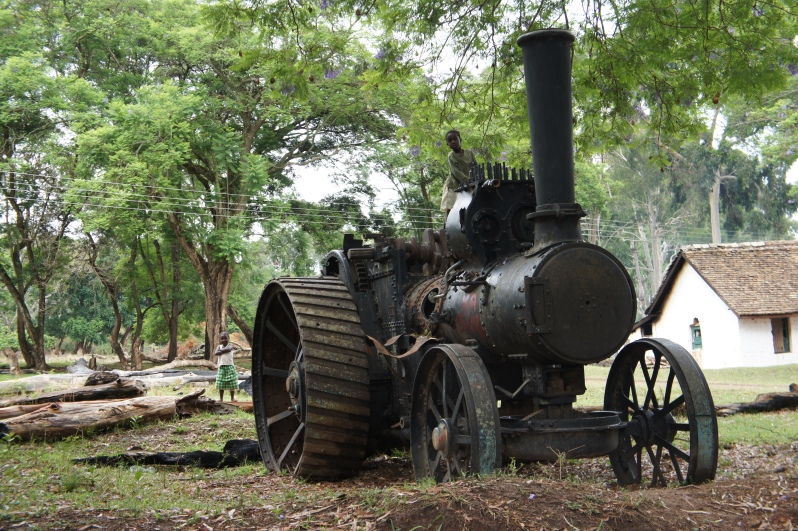
Two years drive from Ndola to Shiwa Ngandu through the forest
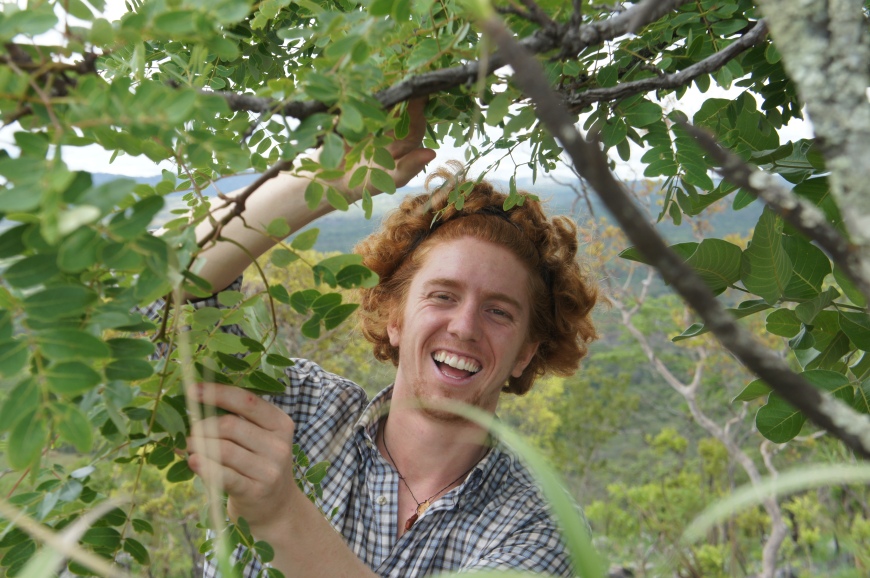
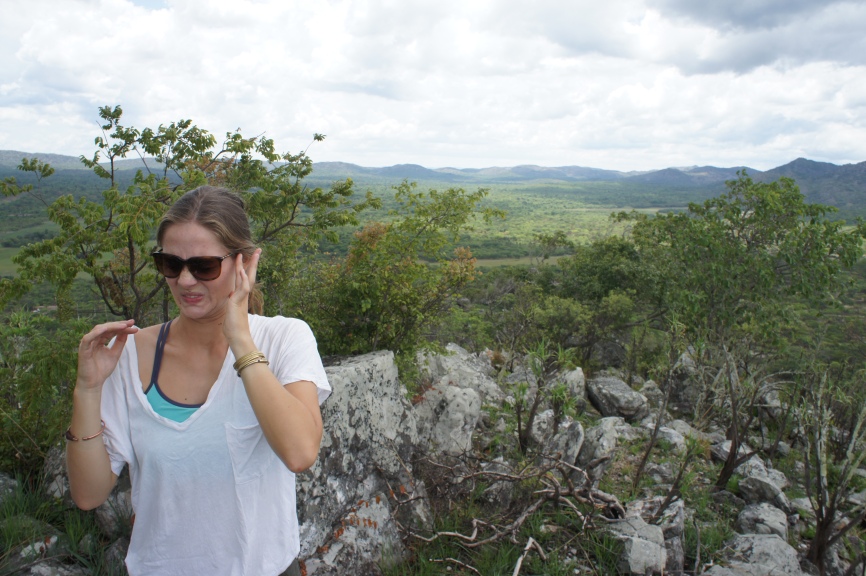
stingless bees
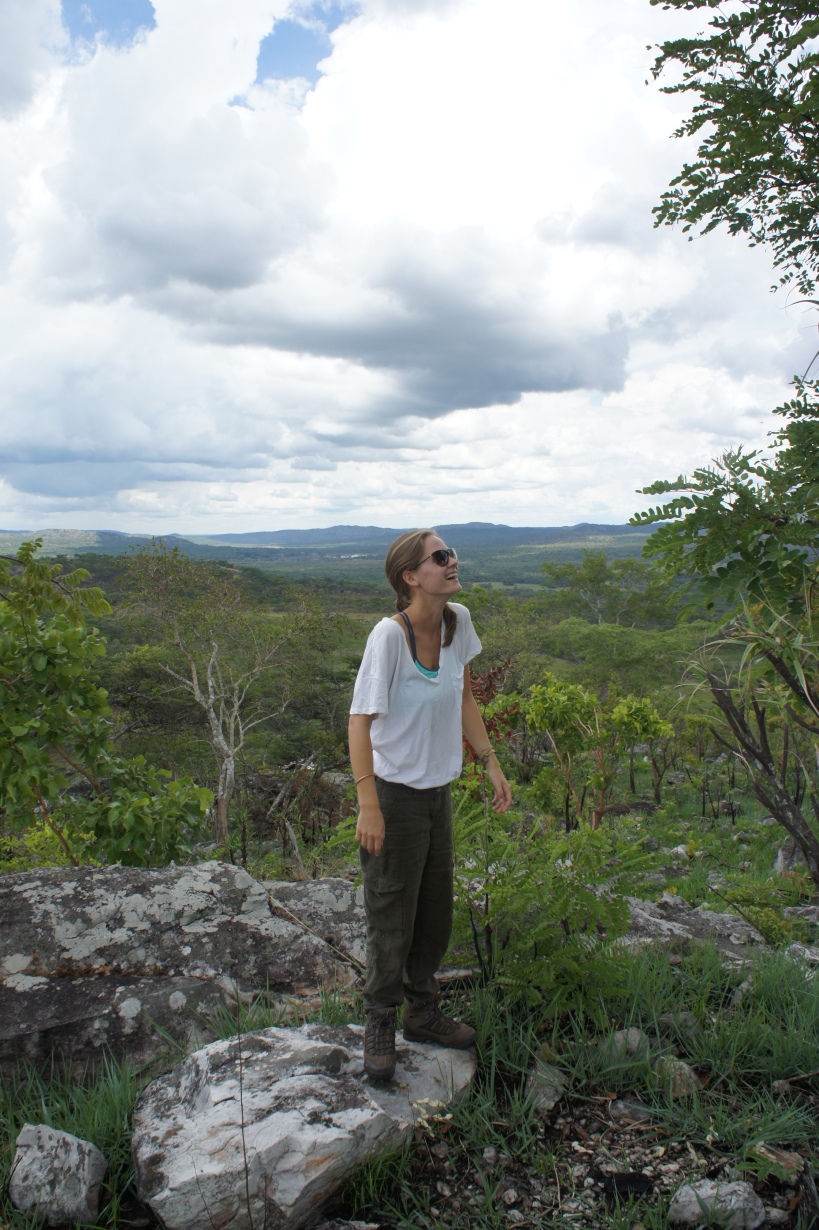
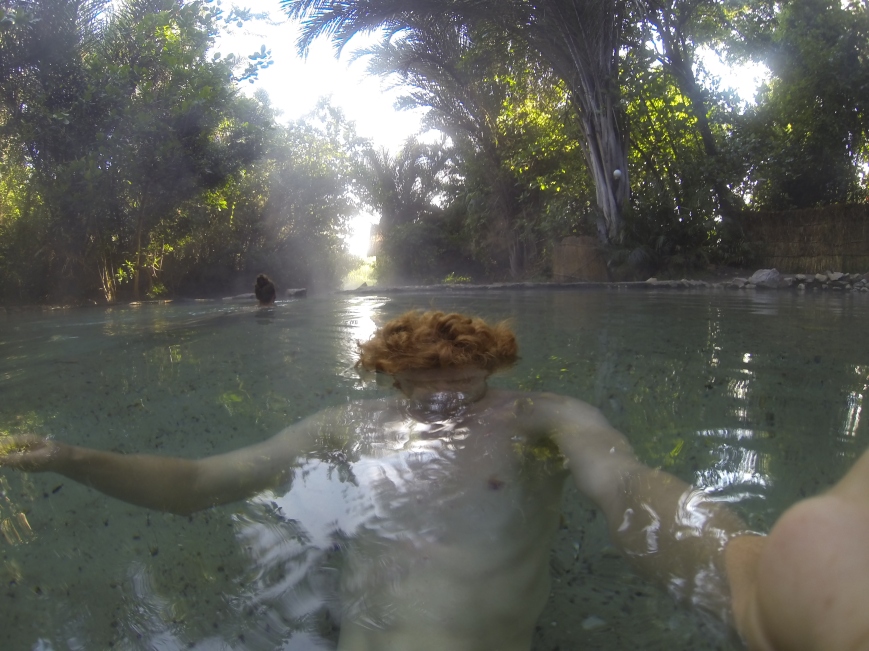
Kapishya Hot Springs
I could have stayed in the hot springs forever listening to Mark’s stories about his grandfather SGB, but Emma heard about the bats. Off we went to Kasanka National Park, not really knowing much about the fruit bat migration. At 5.30pm sharp, we were up a tree, waiting. The sunset provided a spectacular warm up show for what was to come. At 6.10pm on the dot, a bat flew out of the trees to our right. At 6.11pm, the sky was black with wings and the stream of bats pouring out of their roosting place didn’t slow down for half an hour. It is possibly one of the most underrated wildlife happenings with over 8 MILLION big furry fruit bats going through this whole process twice a day every year at the beginning of the rainy season. The gentle swoosh of wings overhead and as far as the eye can see is magical, stopping as suddenly as it started. The moment had gone, it was almost dark, only Venus was visible in the sky and the full moon rose bright red behind us.
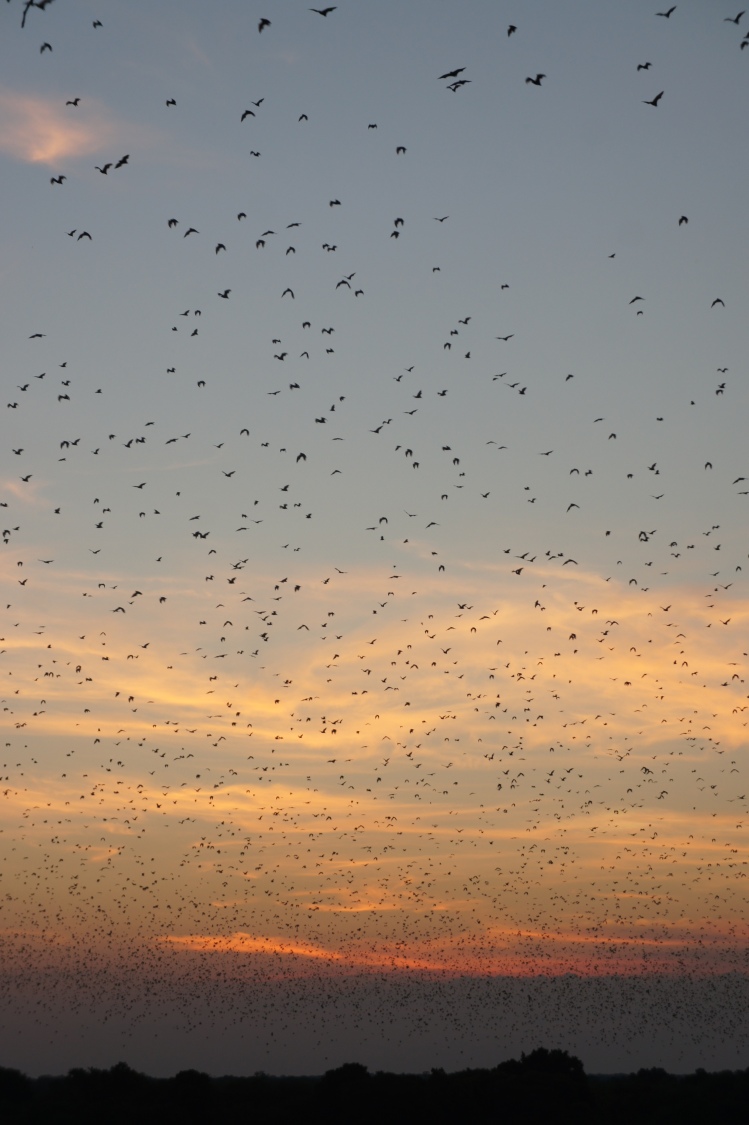
Kasanka Fruit Bats
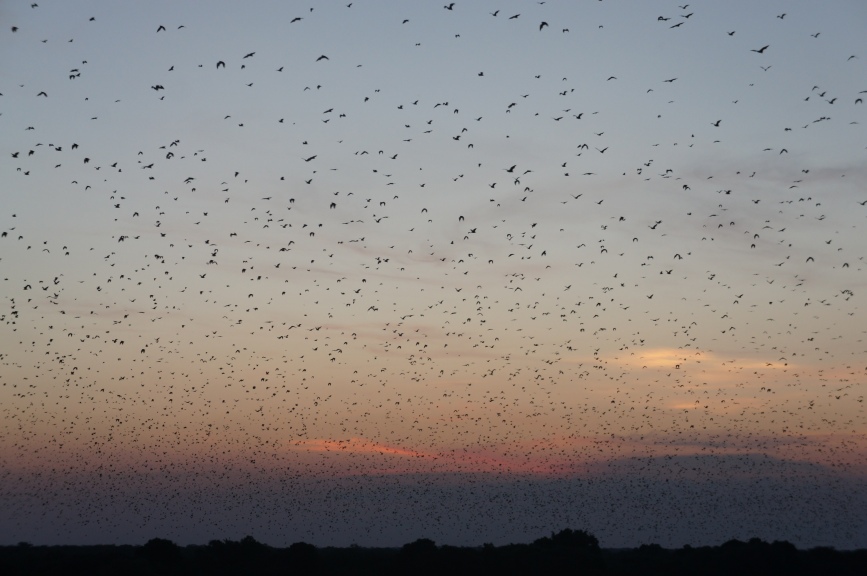
8 Million Kasanka Fruit Bats
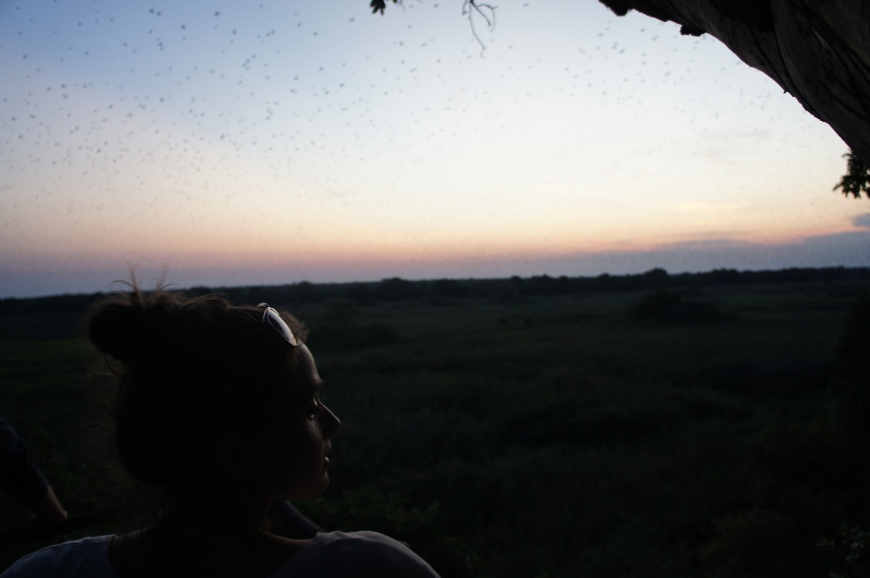
Emma hadn’t done laundry in a long time and our car was getting pretty smelly, when eventually we correlated the stink with the mouse-traps not going off anymore… Was Jack The Mouse dead? Following the stench, we unpacked the car, almost taking all the seats off before finding the source… Jack The Mouse is dead, our car smells better now, and our food doesn’t get eaten anymore. However, it turns out Jack was not a mouse… but a rat. After hitching from Tanzania, Malawi and Zambia, he must have got too fat and thirsty in Zimbabwe. RIP Jack.

Just a happy frog
TFD















